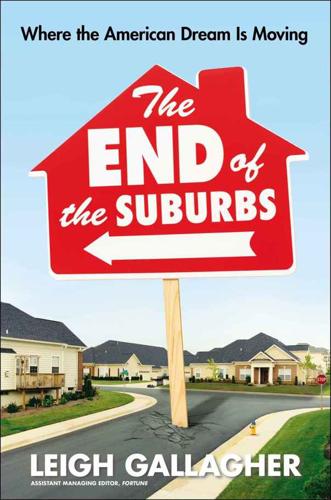
The End of the Suburbs: Where the American Dream Is Moving
by
Leigh Gallagher
Published 26 Jun 2013
Bureau of the Census, Historical Statistics of the United States, Colonial Times to 1970, part 2. The housing shortage was so severe: Jackson, Crabgrass Frontier, p. 232. Jackson’s quote about sleeping in his grandparents’ dining room comes from a transcript of the PBS series The First Measured Century, 2000. The mortgage interest tax deduction, a by-product: Lost in the current political debate over the mortgage interest tax deduction is the fact that the Revenue Act of 1913 didn’t refer to mortgage interest at all; rather, it simply provided a deduction for “all interest paid within the year by a taxable person on indebtedness.” More on this can be found in Dennis J. Ventry Jr., “The Accidental Deduction: A History and Critique of the Tax Subsidy for Mortgage Interest,” Law and Contemporary Problems 73 (Winter 2010): 233–84.
…
But with the new government backing, private lenders were suddenly willing to lend on much more generous terms, extending the length of the loan to twenty and then thirty years and ultimately lending more than 90 percent of the cost of the home to buyers. The modern-day long-term fixed-rate mortgage was born, making it possible for almost anyone to get a home loan. The mortgage interest tax deduction, a by-product of the 1913 law that established the federal income tax—and still one of the biggest incentives for home ownership to this day—provided a welcome assist. Then in 1944, the government passed the Servicemen’s Readjustment Act, otherwise known as the GI Bill, which provided low-interest, zero-down-payment loans to millions of veterans.
…
” • • • For all the ideals of freedom our country was built on, our modern residential pattern of suburban development—and the notion that it provided a better way to live—was decidedly master-planned. It started with the federal policies that laid the groundwork for suburbia, the post-Depression inventions explored in the previous chapter that suddenly made home ownership affordable for the middle class. The mortgage interest tax deduction, which wasn’t even intended for mortgages but was an indirect product of the 1913 act that established the federal income tax, today provides nearly $400 billion in subsidies to home owners each year, propping up the market for single-family homes to the detriment of renters, who get no such help.

Underwater: How Our American Dream of Homeownership Became a Nightmare
by
Ryan Dezember
Published 13 Jul 2020
California law allowed them to drop the keys in the mailbox and move out without worrying about the bank coming after them. It was tempting. “We looked at each other and said, ‘Are we crazy not to walk away? Where would we live?’” Connors said. A bookkeeper, Connors crunched the numbers and decided that renting wasn’t worth it once the mortgage-interest tax deduction for their California-sized loan was considered. “It didn’t make sense to put our family through the stress of moving.” When her husband landed a job in San Jose, they rented out their underwater house. They had some problem renters and lost money at first but were fortunate in 2013 when their adjustable-rate mortgage reset to 3.25 percent, half the interest that they had been paying.
…
Bruce Needs His Money made by neighbors as leads to promotional borrowing rates to rental properties of tenants of mega-developments Merrill Lynch middle-class Million Dollar Club Mobile Bay Mobile Register money borrowing easy The Money Game (Goodman) Moon, Jeff Moore, Roy Morgan Stanley Mortgage Forgiveness Debt Relief Act (2007) mortgage-backed securities mortgage-interest tax deduction mortgages. See also subprime mortgages adjustable-rate broker for down payments on first-lien foreclosures in home prices and interest-only Phoenix borrowers for rates refinancing in rental properties compared to renting instead of savings and loan associations and second strategic default on tax breaks from underwater move-in-ready Mozilo, Angelo Mr.
…
redevelopment pact redlining refinance loans refinancing Regions bank Register English editor of full-page ad in layoffs at as reporter for regulatory response RE/MAX franchise rental properties from foreclosures home prices and increases in Kay’s software scanning of McNeilage mortgage-interest tax deduction and mortgages compared to rental-home business rent-backed bonds rentership society “A Rentership Society” (report) renting costs of homeownership compared to mortgages changing to in Spring Hill upmarket for well-to-do repossessed houses residential construction retirement retirement homes rezoning request Ricardo, David RICO Act Riley, Bob Riverbrooke Capital Partners road construction Romem, Issi Roosevelt, Franklin D.

Walk Away
by
Douglas E. French
Published 1 Mar 2011
If they walk away and buy the similar house, with a 5% down payment of about $9,000—a couple of payments on the current underwater place—the total monthly payment would be $1,200 (compared to the $4,300 they pay now); or the couple could rent a similar house in the neighborhood for $1,000 per month. As professor White explains, “Assuming they intend to stay in their home ten years, [the couple] would save approximately $340,000 by walking away, including a monthly savings of at least $1,700 on rent versus mortgage payments, even after factoring in the mortgage interest tax deduction.” It would take 60 years for the couple to recover their equity assuming that the Salinas, California market had hit bottom and the home began appreciating at the historically typical rate of 3.5%. So what’s our young family to do? Or the bigger question is what are the millions of young families going to do: pay or walk away?
…
Paying down the mortgage is a weak way to build equity. The home will appreciate in value anyway according to Edelman. REASON #3 A mortgage is relatively cheap money. Debt is inevitable in today’s society writes the financial expert, so load up on mortgage debt as opposed to credit card debt. REASON #4 Mortgage interest is tax-deductible. The after-tax interest rate that you pay on your mortgage is lower than other available credit. REASON #5 Mortgage interest is tax-favorable. Rather than pay down debt that is tax-deductable, invest that money in investments that are taxed as low as 15 percent. REASON #6 Mortgage payments generally get easier over time.

Financial Freedom: A Proven Path to All the Money You Will Ever Need
by
Grant Sabatier
Published 5 Feb 2019
Even though I could easily pay off my home, I have a fifteen-year mortgage on it at 2.625 percent interest, and I am going to keep that mortgage because I’d rather invest that money at 7 percent plus returns than use it to pay off my mortgage. Investing in stocks gives me a higher return; I’m also able to take advantage of the tax advantages of home ownership, like the mortgage interest and tax deductions. If the interest rate on your debt is higher than any return you could realistically get on an investment, then you should pay down that debt before you invest, because that debt is compounding faster than any money you invest would grow. Compounding works both ways, so always make the decision that benefits you most based on the numbers.
…
You can then use that profit for a down payment on another property or even multiple properties, all tax-free! Another huge benefit of buying real estate using a mortgage is that all of the interest on up to a $750,000 mortgage on your primary and secondary residences (if you have one) is tax deductible. In addition to the mortgage tax deduction, you can also deduct up to $10,000 in property and state taxes from your federal tax return. As the current tax bill stands, this deduction is expected to increase to cover the interest on a mortgage of up to $1 million by the year 2026. Many people think they need a huge down payment or that they need to commit to stay in a home for at least five years for a real estate investment to be worth it.
…
Liabilities—The amount of money you owe, including credit card debt, student loan debt, mortgages, and any other debt. You use your liabilities when calculating your net worth by subtracting your liabilities from your assets. Mortgage—You can use mortgage loans (i.e., the bank’s money) to buy a property, and then the interest on the mortgage is tax deductible, as well as up to $10,000 of your property taxes, both of which add to your real estate investment returns by reducing your taxes. Mutual funds—Mutual funds are designed for the purpose of simple diversification and hold either a collection of stocks, a collection of bonds, or a mixture of stocks and bonds (known as blended funds).
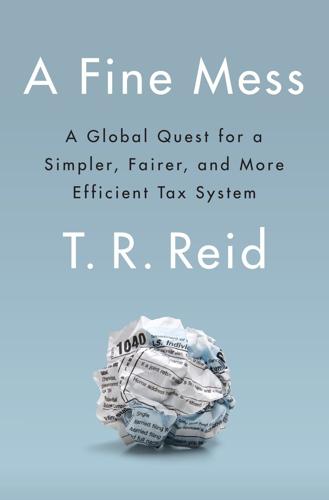
A Fine Mess
by
T. R. Reid
Published 13 Mar 2017
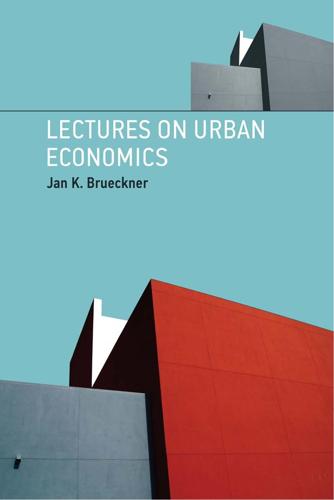
Lectures on Urban Economics
by
Jan K. Brueckner
Published 14 May 2011
Table 6.1 summarizes the treatment of the various housing-cost elements for both owner-occupiers and landlords under the U.S. income tax code, indicating whether the costs are tax deductible. Mortgage interest, property taxes, and depreciation are all tax deductible for landlords. Mortgage interest and property taxes are deductible for owner-occupiers, but depreciation isn’t.4 The benefits accruing to landlords are the rental income they earn from their properties and the capital gains they enjoy. Both of these benefits are taxable, as can be seen in table 6.2. Capital gains are among the benefits accruing to owner-occupiers, as was discussed above.
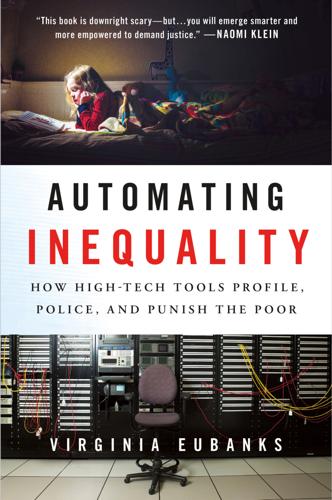
Automating Inequality
by
Virginia Eubanks
Mobile and integrated administrative data can turn any street corner, any tent encampment, or any service provider into a site for a sting operation. * * * This kind of blanket access to deeply personal information makes little sense outside of a system that equates poverty and homelessness with criminality. As a point of contrast, it is difficult to imagine those receiving federal dollars through mortgage tax deductions or federally subsidized student loans undergoing such thorough scrutiny, or having their personal information available for access by law enforcement without a warrant. Moreover, the pattern of increased data collection, sharing, and surveillance reinforces the criminalization of the unhoused, if only because so many of the basic conditions of being homeless—having nowhere to sleep, nowhere to put your stuff, and nowhere to go to the bathroom—are also officially crimes.

I Will Teach You To Be Rich
by
Sethi, Ramit
Published 22 Mar 2009
See Earnings; Raises; Salary Index funds, 155, 156–57, 167, 177–80, 185, 186, 197, 201–2, 209, 211, 212, 258 buying into, 194–95, 198 choosing, 191–94, 198 constructing portfolio of, 188–95 expense ratios of, 157, 178, 192 rebalancing portfolio and, 180, 181, 189, 203–5, 206–7, 209 Swensen allocation model and, 189–91, 192, 195 Inflation, 7, 53, 70, 170, 240, 253, 256 Information glut, 4–5 ING Direct, 51, 62–63 Insurance: car, 18, 31, 248 homeowner’s, 216, 259 life, 216–17 Interest: on bank accounts, 51, 52, 53, 54, 59, 60, 61 on car loans, 248 on mortgages, tax deduction for, 256 on student loans, 220, 221 see also Annual percentage rates International equities, 157, 190, 203 Investing, 9, 11, 12, 69–90, 109, 143–215 active vs. passive management and, 155–58 in art, 182 asset allocation and, 166, 170–72, 175, 180–81, 183–85, 189–91, 202, 208–9 automatic, 162–64, 202–3 concerns about risks of, 164 Conscious Spending Plan and, 106 determining your style of, 160–61, 198 diversification and, 166, 170, 172–75, 181 dollar-cost averaging and, 197 five systematic steps for, 76–77 401(k)s and, 4, 81, 83, 185–86, 189, 198, 201, 209 high-interest savings accounts vs., 69–70 high-risk, high-potential-for-reward, 183 increasing monthly contribution and, 200–201 knowing when to sell and, 211–15 letting your parents manage your accounts and, 222–23 maintaining system of, 200–218 market downturns and, 163 myth of financial expertise and, 143–58 nonretirement accounts and, 77, 78, 79 paying off student loans vs., 220–21 Pyramid of Investing Options and, 167 in real estate, 182, 202, 251, 253–54, 256 rebalancing portfolio and, 180, 181, 189, 203–5, 206–7, 209 Roth IRAs and, 83, 186–95, 198, 209 for specific goal, 215 starting early and, 4–5 summary of advantages of, 81 tax concerns and, 205, 209, 210–11, 215 time to double money and, 187 underperformance and, 212–15 young people’s poor attitudes and behaviors and, 71–75 in your own career, 77 see also Bonds; Index funds; Lifecycle funds; Mutual funds; Stocks Investment brokerage accounts: automatic transfers to, 87, 88, 89, 90, 129, 132, 137, 187, 188, 195 choosing, 86–88 keeping track of, 88 IRAs, 81, 141, 209 see also Roth IRAs j Jenkins, Richard, 107 JLP at AllFinancialMatters, 152 Job offers: multiple, salary negotiations and, 235, 238, 239 negotiating, 236–37 l Ladder of Personal Finance, 76–77 Late fees, of credit cards, 22, 23, 24 Leasing cars, 246 Leverage, 256 Lifecycle funds (target-date funds), 167, 180–85, 186, 189, 203, 205, 211 buying into, 188, 198 choosing, 187–88, 198 Life insurance, 216–17 Loads, of mutual funds, 156, 177 Lynch, Peter, 149 m Malkiel, Burton G., 150 Materialism, 74 Media, personal advice and, 5–6 Millionaires, behaviors of, 73–74 Money-market funds, 4, 170, 186 Moody’s, 150 Morningstar, 148–50, 152 Mortgages, 50, 216, 253, 255, 258 credit scores and, 16–17, 256–57 paying extra on, 77, 258 tax deductions and, 256 Mutual funds, 167, 176–77, 180 active vs. passive management and, 155–58, 177, 178 fees of, 155–56, 157, 163, 176, 177, 178, 179 managers’ inability to predict or beat market and, 144–51, 155, 177, 178 ratings of, 148–50 see also Index funds n Negotiating: with car dealers, 248–49 for job offers, 236–37 for salary in new job, 120, 234–44 Newsletters, market-timing, 147 “Next $100” concept, 128 Nickel (of www.fivecentnickel.com), 208–9 o O’Neal, Edward S., 158 Online banks, 51 checking accounts of, 62, 68 high-interest savings accounts of, 51–52, 53, 54, 59, 62–63, 65, 68, 69–70 Online shopping, 135 Overdrafts, 50–51, 65–67, 110, 116 p Parents, 222–24 managing their kids’ money, 222–23 in severe debt, helping, 223–24 Partners.
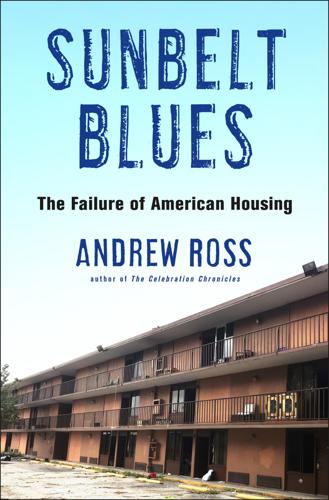
Sunbelt Blues: The Failure of American Housing
by
Andrew Ross
Published 25 Oct 2021
In many locations where upzoning has been tried, even with a requirement for a certain percentage of affordable units, landlords and for-profit developers have been the primary beneficiaries.19 As a result, grassroots activists in New York City have successfully opposed several high-rise projects intended for low-income neighborhoods, arguing that their “affordable” units would still be too expensive for most people in the area, while land speculation in the neighborhoods around the towers would drive out longtime residents.20 Lobbyists for the real estate industry, meanwhile, see arguments for increased housing supply as an opportunity to prise more money from the government. They insist that tax breaks, fee waivers, density bonuses, and similar measures are what’s needed to wean developers off their addiction to the single-family home. But the industry already receives vast subsidies: everything from federal mortgage insurance to the mortgage interest tax deduction supports homeowners at public cost. The hundreds of billions spent on highway construction and the government policies designed to ensure cheap gas are also immense subsidies to land developers. The scope of the affordable housing shortage demands a government response far beyond the reflex action of just offering more sugar for developers to jump into the game.
…
Hispanic Federation Hochschild, Arlie Holborn, Robert Hollywood Studios Holy Land HomeAway homeless adults advocates camps children defined identity initiatives linking motels to people shelters status students Homeless Services Network Homeless: The Motel Kids of Orange County (Pelosi) homeowners/homeownership association Generation Rent low-cost middle-class security middle-income earners mortgage interest tax deduction renters and Homes for All Homes for All Act homesickness HomeSuiteHome homes turned into hotels distributed hotels hospitality Hong Kong Hope Village hospitality Hospitality Helps Hotel California Hotel Impossible hotels Disney’s Good Neighbor partnership program distributed hotel “extended-stay” service occupied by low-income families in Orange County properties superseded by interior-corridor budget hotels support offered to unhoused people temporary eviction moratorium Hotel/Motel Association households budgets lower-and middle-class/income minority housekeeping housing affordable.

The Raging 2020s: Companies, Countries, People - and the Fight for Our Future
by
Alec Ross
Published 13 Sep 2021
That has historically come in the form of homeownership. Owning your home became foundational to the American dream and to the growth in wealth of middle classes in Europe and Asia in the 20th century. In the United States, we put a thumb on the tax scale to enable this by making the interest on mortgages tax deductible. This began with retirement savings accounts like 401(k)s and should just be the beginning. Silicon Valley became Silicon Valley in significant part because one thing that drove talent from other places and industries, like finance and consulting, was employee ownership in the form of stock options.
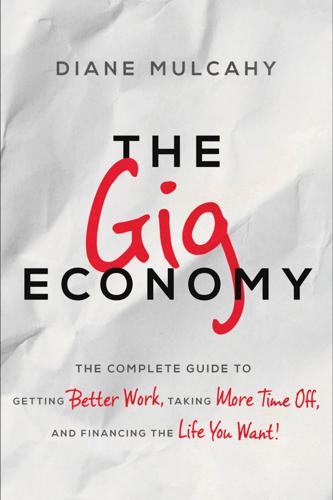
The Gig Economy: The Complete Guide to Getting Better Work, Taking More Time Off, and Financing the Life You Want
by
Diane Mulcahy
Published 8 Nov 2016
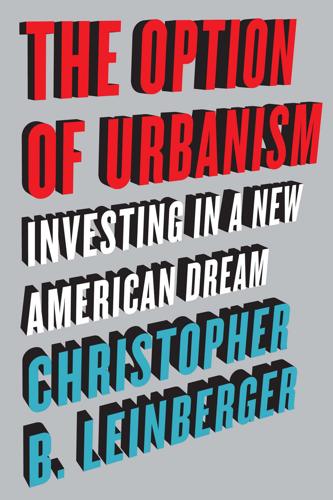
The Option of Urbanism: Investing in a New American Dream
by
Christopher B. Leinberger
Published 15 Nov 2008
Combining federal, state, and local laws, subsidy programs, and infrastructure investments encouraged and in actuality mandated only one kind of growth: low-density, drivable sub-urbanism. This American domestic policy has been dictating growth for the past sixty years and is still in force in the early twenty-first century. From one perspective, any domestic policy engages in social engineering. Whether it is the tax deductibility of home mortgages to increase home ownership, tax-deductible charitable contributions to encourage donations, or laws to try to keep citizens from buying illicit drugs, domestic policy is social engineering. The social engineering that promoted drivable sub-urbanism was not a conspiracy imposed on the American people; we wanted it and we truly believed it to be the best future.
…
This $7,800 item in the family budget is paid for in after-tax dollars, which means that if the household’s combined state and federal tax bracket is twenty percent, the family would have to earn $9,750 in pretax salary to pay for each car ($7,800 divided by eighty percent). The result is that owning an average 78 | THE OPTION OF URBANISM car is the equivalent of having an additional $135,000 mortgage (mortgage interest is tax-deductible, and this calculation assumes six percent mortgage interest). In essence, drivable sub-urbanism has probably been shifting family spending away from investing in a long-term appreciating asset (e.g., a house) or savings to a short-term depreciating asset (e.g., a car). The above calculations were for a typical car-owning family, but the findings become even more grim for a working-class family.

The American Way of Poverty: How the Other Half Still Lives
by
Sasha Abramsky
Published 15 Mar 2013
But whereas the impoverished lady would keep it, Buffett and Zuckerberg would be expected to pay it back. Do this, she argued, with all the fervor of a convert to a cause, and one could do away with a slew of other bureaucratic, and costly-to-implement subsidies and social programs. There would, for example, be no need for the mortgage interest tax deduction, or for housing assistance, or food stamps, or the Earned Income Tax Credit. How much would it cost? At $6,000 per person, its first year would run to an eye-popping $2 trillion. But, Zelleke hurriedly explained, aware of the almost cartoonish nature of that number, most of that would be recouped through back-end taxes, through the elimination of other costly subsidies, and through the magnifier effects created as money more effectively circulated through some of the country’s most vulnerable regions.
…
Even if it proved cost-effective to give everyone a monthly check from the government in lieu of the hodge-podge of programs and non-cash assistance that people currently use and then to reclaim that money from more affluent Americans come April when people file their taxes, convincing people of this in a world of fifteen-second sound bites would be a monumental challenge. The huge initial sticker price would scare many people off, even if the bulk of it could be recouped through back-end taxes and the cutting of programs, such as housing assistance, made redundant by the minimum income safeguard. The loss of familiar perks such as the mortgage interest tax deduction would terrify many voters, even if the net result of the new system was a wash for their families, and the sense that ever more people were coming to rely on handouts would prove anathema to a society long suspicious of what conservatives have come to deride as an “entitlement culture.”
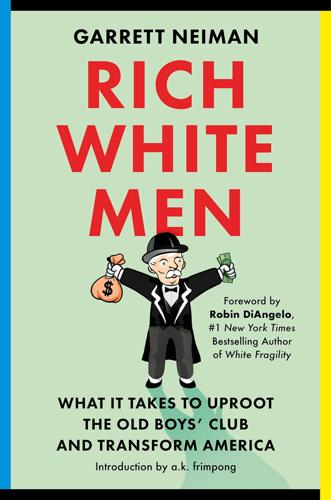
Rich White Men: What It Takes to Uproot the Old Boys' Club and Transform America
by
Garrett Neiman
Published 19 Jun 2023
For example, in recent years, the federal government doled out $200 billion annually in tax refunds to homeowners via the mortgage interest deduction.35 This benefit is only available to those who itemize their taxes—typically middle-class and wealthy people—so most of the checks benefit the already-wealthy: 70 percent went to families who make $200,000 or more.36 The mortgage tax deduction is one of many “upside-down” tax policies that primarily benefit the wealthy. Each year, the United States issues $1.2 trillion in tax refunds via its tax expenditures program.37 That’s nearly double the government’s military budget, which sustains eight hundred bases in seventy countries.

Our Kids: The American Dream in Crisis
by
Robert D. Putnam
Published 10 Mar 2015
Residential segregation is deeply rooted in growing income inequality, in people’s desire to live around people like themselves, and in the financial equity that middle-class Americans have embodied in their homes, so efforts to reduce class segregation are fiercely resisted. While some government policies are designed to reduce neighborhood inequality, other policies, such as exclusive zoning regulations and the home mortgage tax deduction, indirectly encourage residential segregation. But efforts to alter such policies, as well as school district boundaries and school siting, are objects of great political contention. Publicly subsidized mixed-income housing is one potential solution that has been tried in various forms for the past several decades.

Makers and Takers: The Rise of Finance and the Fall of American Business
by
Rana Foroohar
Published 16 May 2016
Anyone who buys a house (or two houses) can deduct the interest payments on the loan to buy the property as long as it doesn’t exceed $1 million. One million bucks! That’s a lot of money. No one really needs that much house, but quite a few have it anyway. In my Brooklyn neighborhood, for example, $1 million down will get you a $3–4 million townhouse. But if wealthy people weren’t able to reduce their house payments via the mortgage interest tax deduction, the homes wouldn’t be going for those rates. This is a crucial point: debt inflates asset prices. That’s great for the wealthy, who own a lot of assets, and even better for their banks. But it’s not so good for poorer, more highly leveraged people who don’t have as much equity skin in the game and can be hit very hard when bubbles burst.
…
A 2011 report by the IMF, for example, suggested that companies might be allowed deductions for equity returns, as well as for debt, crafting a system that balances the two more evenly, of the kind that already exists in many parts of Europe.48 Certainly top marginal rates for the rich should rise, out of basic fairness, and the performance pay loopholes and other exemptions that distort the pay of top earners should be closed. Capital gains tax deductions should be calculated on a sliding scale, so that people who hold a stock for, say, a year don’t benefit as much as those who hold it for many decades. And, as much as people like me benefit from it, it’s only fair that the mortgage interest tax deduction should be reformed (meaning, lowered or even abolished in some cases). This step would probably hurt consumption in the short term, since homeowners wouldn’t feel as rich, but in the longer term it would very likely help deflate housing asset bubbles and financially empower Millennials and older people who have trouble paying for housing in today’s market.
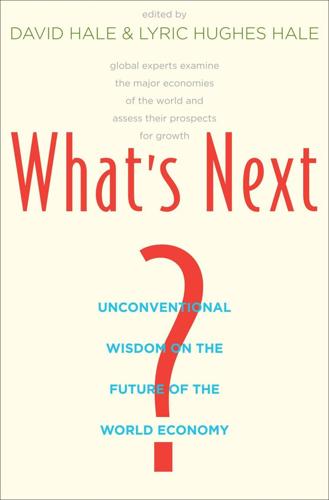
What's Next?: Unconventional Wisdom on the Future of the World Economy
by
David Hale
and
Lyric Hughes Hale
Published 23 May 2011
Thus, unlike in many jurisdictions in the United States, where the borrower can simply “mail the key to the bank and walk away,” if, for example, the value of the property falls below the mortgage principal, Canadian borrowers can have other assets and even future earnings attached by the lender. Home mortgage interest is not tax deductable in Canada either (but capital gains on a home are also not subject to tax). Full recourse mortgages and no mortgage interest tax deductibility significantly reduce the incentive to take out excessively large mortgages. Indeed, there is an incentive to accelerate mortgage repayment. Unsurprisingly, a large proportion of mortgages in Canada are insured.

13 Bankers: The Wall Street Takeover and the Next Financial Meltdown
by
Simon Johnson
and
James Kwak
Published 29 Mar 2010
Many families have made money from housing price appreciation (particularly if they took out mortgages before the inflation of the 1970s), but their high returns are primarily due to the high leverage built into a typical mortgage—leverage that produces massive defaults and foreclosures in a housing downturn such as the one that began in 2006. The things that make housing attractive as an investment are favorable government policies, such as the mortgage interest tax deduction, in which the government subsidizes mortgages for homeowners.* In any case, homeownership ranks alongside motherhood and apple pie in the firmament of American values, and helping more people buy houses is almost always seen as a good thing. Lewis Ranieri capitalized on this ideology when he created the market for private mortgage-backed securities beginning in the late 1970s.
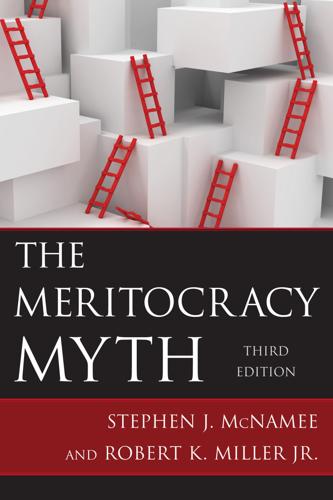
The Meritocracy Myth
by
Stephen J. McNamee
Published 17 Jul 2013

The Making of Global Capitalism
by
Leo Panitch
and
Sam Gindin
Published 8 Oct 2012
As we saw earlier, a key factor in the steady expansion of Americans’ consumer and mortgage debt since the 1970s had been reformers’ faith that private finance could be used by the state in the public interest—in other words, that financial institutions could be so regulated and reformed as to ensure their functioning in the interest of social groups that they had hitherto excluded. The rising demand for home-ownership at lower income levels had been encouraged by government support for meeting housing needs through financial markets backed by mortgage tax deductions. Of course, the desire to realize the American dream of home-ownership on the part of so many of those who had previously been excluded was one thing; actual access to residential finance markets was another. Access for such unprecedented numbers by the turn of the century was only possible because financial intermediaries were frantically creating domestic mortgage debt in order to package and resell it in the market for structured credit.
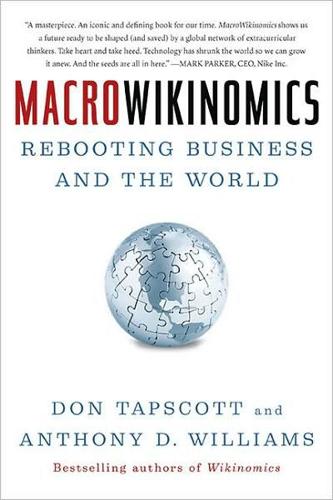
MacroWikinomics: Rebooting Business and the World
by
Don Tapscott
and
Anthony D. Williams
Published 28 Sep 2010
Banks could unload their mortgages on these institutions, guaranteed by the U.S. government. 3. “FT Global 500 2010,” Financial Times (May 29, 2010).. 4. There’s another factor, too. Canadians can’t write off their interest payments, so home buyers are most cautious. In the United States the mortgage tax deduction encourages people to stay in debt, and when they can’t make payments they simply walk away. Not so in Canada, where homeowners must personally guarantee their loans. 5. “Congress is pressed for bailout with dire warnings,” Reuters (September 24, 2008). 6. The call for greater transparency in financial services has a long backstory.
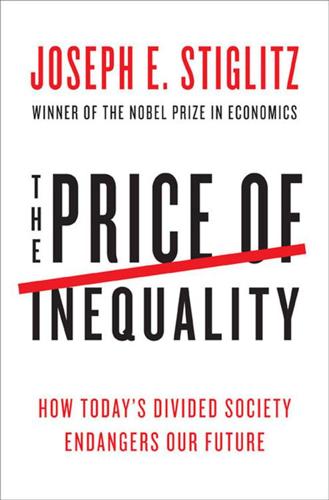
The Price of Inequality: How Today's Divided Society Endangers Our Future
by
Joseph E. Stiglitz
Published 10 Jun 2012
housing discrimination, 70–71, 308 housing market: bubble in, 54, 85, 88–89, 183, 191–93, 211, 232, 243, 262, 378, 388 collapse of, 3, 8, 13, 89, 91, 169, 198, 223, 285, 294, 296, 302, 311, 314, 363 recovery in, 284–85 see also foreclosures; mortgage restructuring; predatory lending; subprime crisis housing subsidies, 74 human rights, 59, 155 ideas: democracy and, 185 evolution of, 156–59, 160 immigration, 53, 227, 296 imprisonment, 15, 70, 303, 304–5 incentive pay, 78–79, 87, 107, 108–14, 153–54, 163, 173, 205, 342, 343, 347 income redistribution, 85, 211 criticisms of, xxii, 106 government’s role in, 30–31, 71–76, 155, 238, 279 political limitation of, 32, 77 India, 152–53, 196–97, 249 Industrial Revolution, 30, 105, 345 inequality: alternative models of, 81–82 consequences of, 83–117, 125, 133–35, 147, 148, 186, 187–206, 233 deficit reduction and, 221–24 determinants of, xii, 28, 30–31, 33–39, 79–82, 267, 271, 276 educational, xiv, 19, 20, 30–31, 68, 75, 94, 102, 108, 160, 307–8, 322 efficiency and, 106–16, 117 globalization’s effect on, 60, 63–64, 79, 80, 140, 142, 144, 145 government’s role in, 6, 28, 30–32, 52, 57–58, 74, 75–76, 77, 79, 81, 82, 147, 153, 172–73, 190, 207 historical, 29–30, 332 income, 2, 3, 4, 7–8, 9, 22, 24, 25, 26, 27, 29, 30, 52, 53, 54, 55, 56, 57, 71, 72, 77, 79–80, 81, 85, 86, 127, 153, 178, 183, 202, 233, 240, 241, 267, 294–95, 296, 297, 298, 299, 300, 311, 328, 332, 335; see also income redistribution and instability, 5, 84–92, 117, 240 justifications for, 27, 29, 30, 77–78, 81, 154, 156, 342 lifetime, 26, 106, 310, 311 macroeconomic factors in, 238–64 markets’ effect on, 52–82 perceptions of, 127, 147–48, 152–55, 159, 160, 179, 184 remedies for, 29, 107, 114–17, 213, 237, 268–85, 287 rent seeking and, 32, 38, 40, 77, 107, 173, 213 and social distance, 148, 160 societal effects of, xii, xvi–xvii, xx, xxii, 2, 18, 20, 27, 65, 76, 84, 90, 100, 104–6, 117, 326–27 societal factors in, 53, 64–71, 82, 84, 282 inflation, 219, 239, 240, 241, 242, 248–49, 255, 259–60, 261, 262, 263, 279, 365, 378, 383, 384, 385, 391, 392, 393 Informant, The, 320 infrastructure, 88, 92, 93, 102, 115, 117, 155, 216, 267, 283 innovation: in business, 35, 41, 46, 78, 96, 178–79, 314, 315 direction of, 58, 244, 270, 283–84 patent law and, 43, 202 scientific, 41, 78, 93, 100, 202 insurance industry, 176, 177, 228, 274, 276 intellectual property, 140, 202–3, 316, 323, 354, 375 see also patents interest rates, 3, 7, 49, 71, 80, 86, 88, 110, 177, 208, 209, 217, 234, 242, 243, 244, 245, 251, 259, 260, 261, 262, 283, 380, 382, 385, 386, 392 International Monetary Fund (IMF), 60, 61, 91–92, 138, 141, 181–82, 231, 316, 353 Internet, 41, 45, 87, 115, 174, 349, 358 interns, internships, 76, 332 intrinsic rewards, 111–12 investment: globalization and, 60, 73, 74 private, 6, 73, 74, 86, 87, 88, 92, 222, 225, 226, 230, 235, 243, 244, 283, 335, 382 public, 23, 40, 80, 84, 88, 92–94, 102, 114, 115, 155, 174, 216, 217, 218, 230, 232–33, 263, 267, 273, 279, 281, 282–83, 381 Iran, 22, 23 Iraq War, 101, 143, 176, 209, 210, 211, 340 Ireland, financial crisis in, 182, 210, 219, 220, 255, 256 irrigation, 122, 322 Israel, 14, 262 Italy, 18 financial crisis in, 138–39, 255, 389–90 Japan, 14, 19, 308 Jobs, Steve, 41, 315 JPMorgan Chase, 345, 374, 388 judges, 44, 200, 373 Justice Department, U.S., 199, 318 Kerry, John, 359 Kessler, David, 357 Keynes, John Maynard, 86, 105, 151, 267 King, Mervyn, 248 Korea, 16, 19 Krueger and Mas, 104 Krugman, Paul, 137 labor, 55, 152 bargaining power of, 61, 64, 277, 281; see also labor unions demand for, 38, 53–57, 61, 63 in developing world, 63, 64, 326, 397 discrimination in, 68–70, 71 fairness in, 103–4, 127 free mobility of, 59–60, 61–62 globalization’s effect on, 56, 59–60, 61, 63, 64, 80, 233, 277, 280, 281, 324, 325 Great Recession’s effect on, 29, 57, 65, 67, 91, 124–25, 231, 241–42, 250, 380 macroeconomic policies affecting, 80, 225, 279 motivation of, 102, 103 polarization of, 8–9, 56, 79, 80, 133, 277 public-sector, 57, 322 in recessions, 29, 67, 124 and social capital, 124–25 structural changes in, 53–54, 56, 232–33, 263, 280–81, 285 technology’s effect on, 53, 54–56, 63, 79, 80, 277, 280, 283, 334 women in, 14 work hours and, 9, 14, 26, 327 see also employment; unemployment; wages labor unions, 38, 57, 64–65, 66, 67, 79, 80, 281–82, 327 Latin America, 23, 40, 84, 231 Latvia, austerity in, 231 Lauder, Ronald, 72 lawyers, 42–43, 99–101, 190, 203, 339 Lay, Ken, 178 legal system, U.S., 187–206 alternative frameworks for, 188, 202 banks’ deception in, 198, 199, 200, 201, 373 burden of proof in, 199–200 contracts in, 197 corporate advantages in, 66, 132, 189–90, 191, 203, 272, 327, 374 costs in, 100, 189–90, 202 distributive consequences of, 190, 193, 271, 317, 370 economic bias in, 44 Federal Reserve accountability in, 252 financial crisis prosecution in, xv–xvi, 70, 119, 199, 372, 373 financial sector’s favoring in, 191–202, 203, 204–6 information asymmetries in, 271, 368 political influence in, 44, 190–91, 200 property rights in, 190, 194, 197, 198, 199 purpose of, 100, 188–91 reform of, 273 rent seeking in, 42, 43, 203, 273 and social responsibility, 121 unfairness in, 42, 43, 100, 189–90, 191–202, 203, 206, 368, 373, 375 Lehman Brothers, 253, 313, 390 Leme, Paulo, 353 Lenin, Vladimir, 354 Lessig, Lawrence, xxiv LG, 203 Lincoln, Abraham, 137 List, John, 347 lobbying, 48, 95, 101, 185, 196, 319, 324, 325, 338 Lockheed Martin, 210 London Interbank Offered Rate (Libor), 47 Longitude (Sobel), 109 Lula da Silva, Luiz Inácio, 5, 139, 353 Luxembourg, 183, 286 manufacturing: compensation shifts in, 65, 328 job losses in, 54, 56, 57, 232–33, 285, 321 societal impact of, 156 marginal productivity theory, 30, 33, 77, 267 marketing, 150–51, 160, 162, 357, 359 Marlboro Man, 151, 354 marriage, economic insecurity and, 15, 303 Marshall, Alfred, 102 Marx, Karl, 30, 292 Massachusetts, 200–201 McCarty, Nolan, xxiv McDonald’s, 381 media, 128–29, 134, 135, 136, 160, 163, 252, 272, 286, 335, 348, 349, 358 Medicaid, 14, 228, 277, 378 Medicare, 17, 48, 97, 147, 163, 176, 210, 228–29, 265, 320, 355, 364, 378, 380 Mexico, 16, 42, 64, 138, 176, 365 MF Global Holdings, 313 microcredit, 196–97 Microsoft, 42, 44, 45–46, 74, 203, 317, 318, 319 middle class, 54, 117, 137 assistance to, 29, 274 economic insecurity of, xvii, 12–14, 23, 26, 103, 265–66 globalization’s effect on, 63, 64 Great Recession’s effect on, 10 hollowing out of, 2, 9, 25, 38, 84, 133, 300 income of, 3, 4, 7, 8, 9, 14, 25, 54, 56, 57, 63, 72, 240, 297, 298, 300, 385 recovery of, 29, 225 tax deductions for, 222–24, 379 unfair policies toward, xv, xxii wealth sources of, 3, 8, 13–14, 91, 167 Middle East, 40 see also Arab Spring Mill, John Stuart, 368 monetarism, 257, 258–59 monetary policy, 85, 86, 88, 133, 177, 208, 234, 239–40, 248, 250, 251, 252, 254, 257–58, 259, 261, 262, 263–64, 380, 382, 385, 389, 392 distributive consequences of, 243–45, 264, 279 idea-shaping in, 256–63 monopolies 31, 32, 35, 39–47, 95, 97, 140, 213, 270–71, 274, 316, 318 moral hazard, 171, 229, 256, 362, 363 Mortgage Electronic Registry System (MERS), 198, 201, 374 mortgage fraud, 198, 201, 372, 373 mortgage restructuring, 169–72, 201–2, 284–85, 362, 363 mortgages, tax deductions for, 222, 223, 379 mortgage securities, 205 Mosaic, 318 motivation, 102, 103, 111–12 Motorola, 203 Mozilo, Angelo, 333 Mueller, Edward, 42 Mullainathan, Sendhil, 103 municipal bonds, 212, 378 National Academy of Sciences, 26 National Center for Supercomputing Applications, 318 National Commission on the Causes of the Financial and Economic Crisis in the United States, 357, 358 National Economic Council, 180 Netherlands, 19, 22 Netscape, 45–46, 318 New Deal, xiii, 88, 231 Newfoundland, 138 New York Times, 11, 119, 205 Nokia, 203 North American Free Trade Agreement, 141 Norway, 22, 23, 183, 220 NTP, Inc., 203 Obama, Barack, x, 352 deficit reduction by, 207 and ethanol subsidy, 51 Federal Reserve nominees of, 319 financial crisis response of, xv, 168, 169, 361 health care program of, 14, 163, 276 tax position of, 395 Obama administration, xiv, 67, 170, 171, 200, 250, 284, 362, 396 Occupy Wall Street, ix–xiv, xix–xxi, 102, 116, 118, 127, 134, 345 “Of the 1%, for the 1%, by the 1%” (Stiglitz), xi Olin Foundation, 44, 359 1 percent: definition of, xxii economic framework’s favoring of, xx, xxii, 31, 34, 62, 67, 91, 117, 131, 142, 173, 174, 189, 191, 204, 239, 244, 245–46, 264, 348, 354 economic security of, 18, 19, 25 globalization’s benefits to, 62, 64, 142 idea-shaping by, 129, 134, 137, 146–86, 211, 236, 256, 287 income of, 2, 4, 8, 25, 52, 72, 85, 215, 267, 294, 295, 297, 298, 299, 300, 315, 332, 335 legal framework’s favoring of, 188, 191, 202, 206, 273 media’s control by, 129, 134, 286 political power of, xix, 32, 67, 83, 86, 89, 101, 118, 119, 120–21, 129, 131–33, 134, 137, 138, 146, 191, 267, 285, 348, 351 public perception of, 20–21, 146, 154, 159, 358 reform aimed at, 29, 268–74 rent seeking by, 32, 38, 41–43, 77 saving by, 85, 88, 223, 275 small government preference of, 93 social contract violation by, xvi–xvii social contributions of, 27, 41, 77–78, 96, 266 social norms’ shaping by, 53 taxation of, 5, 38, 42–43, 62, 71–73, 74, 76, 77, 84, 86, 87–88, 114, 115, 116, 138, 142, 159, 167, 208, 209, 211, 212, 214–15, 218, 221, 223, 224, 225, 226, 256, 274, 275, 294, 312, 335, 344, 360, 383, 394 value change in, 288 wealth of, 2, 3, 8, 25, 32, 38, 56, 72, 73, 80, 84, 166–67, 295 see also corporations; financial sector Organization for Economic Cooperation and Development (OECD), 16, 185 Orshansky, Mollie, 305 Ostrom, Elinor, 322 overdrafts, 194, 370 Pager, Devah, 69 Papua New Guinea, 184 patents, 43, 202, 203, 316, 374, 375 see also intellectual property pension funds, 227–28 Personal Responsibility and Work Opportunity Reconciliation Act, 17 Pew Foundation, 20 pharmaceutical industry: government munificence toward, 40, 48, 97, 210, 211, 224, 228, 272, 276 research in, 97 see also health industry Pierson, Paul, xxiv Piketty, Thomas, xxiii, 114 Pinochet, Augusto, 258 polarization, 8–9 Polarized America (McCarty, Poole, and Rosenthal), xxiv police lineups, 149 police states, 125 politics, U.S.: cognitive capture in, 161–62 corporate influence in, 34, 37, 41, 47, 48, 50, 51, 61, 62, 95, 99, 101, 111, 131–32, 135, 136–37, 200, 202, 285, 286, 319, 324, 325, 338, 350 distributive consequences of, 31, 52, 58, 239, 277, 278, 322 economy’s linkage with, xi, xix–xx, xxiv, 34, 38–39, 47, 52–53, 59, 65, 66, 89, 118, 131, 135, 138, 151, 173, 266, 287, 288–89, 348 idea-shaping in, 129, 137, 148, 149, 151–52, 153–55, 159–62, 163, 166–72, 175, 180, 185, 186, 285 legal consequences of, 190–91 media’s role in, 129, 134, 135, 136, 160, 163, 286 reform of, 135–36, 267, 285–86 regulatory capture in, 47–48, 248, 249–50, 253, 264 societal factors in, 64 unfairness in, x, xi, xii, xviii–xx, 31–32, 39, 41, 83, 101, 114–15, 118, 119, 120–21, 127, 129, 131–33, 134, 135, 136–37, 138, 144, 146, 191, 196, 200, 202, 267, 285, 286, 319, 324, 325, 338, 348, 350, 351 voting in, 119–21, 129–31, 133, 134, 135, 137, 286, 288, 325, 345, 349, 350, 351, 355 see also democracy, U.S.; government, U.S.
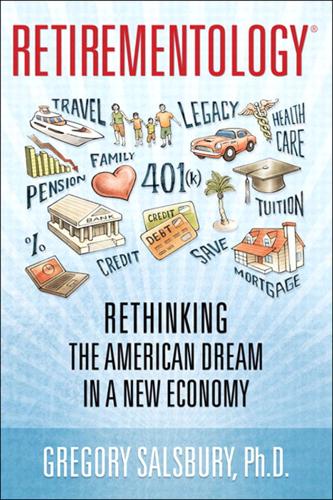
Retirementology: Rethinking the American Dream in a New Economy
by
Gregory Brandon Salsbury
Published 15 Mar 2010
Climate change and groundwater mining on the Great Plains lead to unsustainable surface water storage,” August 3, 2007. 11 The Geological Society of America, “Droughts and Reservoirs: Finding Storage Space Underground,” September 18, 2006. 12 Enid News, “Water Puzzle: Aquifer’s uncertain future has city making other plans,” November 28, 2007. 13 CNN Money, “Tax the rich to pay for...everything?” July 15, 2009. 14 CNN Money, “Tax the rich to pay for...everything?” July 15, 2009. 15 SF Gate, “Mortgage interest tax deduction cut criticized,” February 28, 2009. 16 CNN Money, “Stimulus with interest: $1.2 trillion,” January 27, 2009. 17 CNN Money, “Stimulus with interest: $1.2 trillion,” January 27, 2009. 18 The Heritage Foundation, Backgrounder, “The Obama Budget: Spending, Taxes, and Doubling the National Debt,” No. 2249, March 16, 2009. 19 U.S.
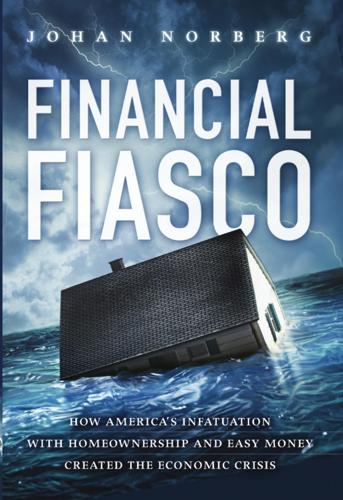
Financial Fiasco: How America's Infatuation With Homeownership and Easy Money Created the Economic Crisis
by
Johan Norberg
Published 14 Sep 2009
In the recent words of leftwing economist James Galbraith, son of the legendary economist John Kenneth Galbraith: the housing sector exists on this scale thanks to a vast network of supporting financial institutions, subject to federal deposit insurance, the secondary mortgage markets provided by quasi-public corporations (Fannie Mae, Ginnie Mae, Freddie Mac), and the tax deductibility of mortgage interest. Since 1986, when the tax deductibility of other forms of interest was eliminated, homeownership rates rose-thanks to the state, not the market.2 On the other side of the political spectrum, enthusiasm was at least as strong. Former Fed chairman Alan Greenspan recently stated: I was aware that the loosening of mortgage credit terms for subprime borrowers increased financial risk, and that subsidized homeownership initiatives distort market outcomes.

925 Ideas to Help You Save Money, Get Out of Debt and Retire a Millionaire So You Can Leave Your Mark on the World
by
Devin D. Thorpe
Published 25 Nov 2012
If your card has a grace period, you’ll likely be paying more than 12 percent annual interest (if you have good credit). If your credit is marginal, you could easily be paying above 20 percent. If you make late payments, you could be paying more than 24 percent interest. Compare that to a mortgage or a car loan at around four percent. Credit card interest, unlike mortgage interest is not tax deductible. This makes it effectively more expensive. If you allow your credit card issuer(s) to tell you when you can stop spending by bumping up against your limit, you may be able to control your spending, but at a high cost. If you could instead control your spending at the level allowed by your income supports with no credit card debt—that is, if you didn’t have the credit card loans on which you’re paying that interest, you’d have much more money to spend.

Rebel Cities: From the Right to the City to the Urban Revolution
by
David Harvey
Published 3 Apr 2012
Th ese institutional reforms were later to play a vital role in financing the subur banization of the United States after World War II. While necessary, they were not, however, sufficient to put ho using construction onto a different plane in US economic development. All sorts of tax incentives (such as 50 R E B E L C I T I ES the mortgage interest tax deduction), along with the GI B ill and a very positive housing act of 1 947, which declared the right of all Americans to live in "decent housing in a decent living environment;' were devised to prom ote home ownership, for p olitical as well as economic reasons. Homeownership was widely promoted as central to the "American Dream;' and it rose from just above 40 percent of the population in the 1 9 40s to more than 60 percent by the 1 960s, and close to 70 percent at its peak in 2004 (as of 20 1 0, it had fallen to 66 percent).
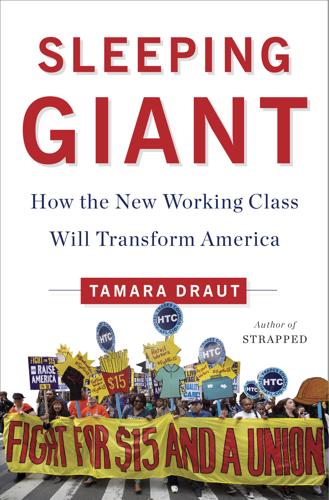
Sleeping Giant: How the New Working Class Will Transform America
by
Tamara Draut
Published 4 Apr 2016
Scott Walker, the Republican governor of Wisconsin and a former 2016 presidential candidate, has proposed testing people who apply for food stamps and unemployment benefits for drug use, joining twelve other states that have attached drug testing to at least some part of their public benefits programs.21 Some people who are reading this book may agree, finding themselves nodding their heads and thinking, “Sure, I don’t want my tax dollars going to drug addicts scamming the system.” But here’s the thing. We don’t require drug testing for public benefits that accrue to more affluent people, like the mortgage interest tax deduction. We don’t drug-test the real estate developers before handing over large tax abatements. We don’t drug-test middle-class parents who claim the child-care tax credit. And it defies the imagination that anyone would ever propose such a policy. Why? Because there’s an implicit assumption that all these individuals, by virtue of their middle-class or higher status, adhere to social norms and therefore have earned the right to such benefits.

A Generation of Sociopaths: How the Baby Boomers Betrayed America
by
Bruce Cannon Gibney
Published 7 Mar 2017

The greatest trade ever: the behind-the-scenes story of how John Paulson defied Wall Street and made financial history
by
Gregory Zuckerman
Published 3 Nov 2009
More than most nations, the United States worked at getting as many people in their own homes as possible. Academic data demonstrated that private-home ownership brought all kinds of positive benefits to neighborhoods, such as reduced crime and rising academic achievements. The government made the interest on mortgage payments tax deductible, and pressure on Congress from vested interests in the real estate business kept it that way; other benefits doled out to home sellers and buyers became equally sacred cows. Low-income consumers and those with poor credit histories who once had difficulty borrowing money found it easier, even before Alan Greenspan and the Federal Reserve started slashing interest rates.

Poverty for Profit
by
Anne Kim
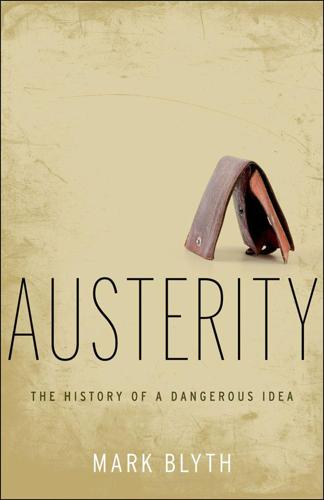
Austerity: The History of a Dangerous Idea
by
Mark Blyth
Published 24 Apr 2013
. … This is not a misprint.30 If you reside in the middle or the bottom half of the income and wealth distribution, you rely on government services, both indirect (tax breaks and subsidies) and direct (transfers, public transport, public education, health care). These are the transfers across the income distribution that make the notion of a middle class possible. They don’t just happen by accident. Politics makes them happen. Americans did not wake up one morning to find that God had given them a mortgage-interest tax deduction. Those further up the income distribution who have private alternatives (and more deductions) are obviously less reliant upon such services, but even they will eventually feel the consequence of cutting state spending as the impact of austerity ripples back up the income distribution in the form of lower growth, higher unemployment, withered infrastructure, and an even more skewed distribution of resources and life chances.

Palo Alto: A History of California, Capitalism, and the World
by
Malcolm Harris
Published 14 Feb 2023
The railroads came to stand for capitalism’s impersonal forces writ large: fast, loud, disruptive, dangerous, encased in metal. Legally, too, the Combine became its own person. When California rewrote the state constitution at the end of the 1870s, delegates included a provision that revoked the mortgage tax deduction for the railroad, since it was a corporation rather than a human being. The Combine refused to pay, and the state and two counties sued for their money. Aggregating the three cases, the justices of the Supreme Court agreed in 1886’s Santa Clara County v. Southern Pacific Railroad Company that corporations were entitled to avail themselves of the young Fourteenth Amendment and its equal protection clause.13 They ruled for the Combine and established the doctrine of corporate personhood.

Happy City: Transforming Our Lives Through Urban Design
by
Charles Montgomery
Published 12 Nov 2013
Then there is the U.S. government’s accelerated depreciation tax deduction, which gives developers a generous tax break for creating new buildings rather than renovating or reusing old ones. It effectively rewards Walmart for abandoning older stores and building in regional power centers far from the communities they first promised to serve. Another misguided gift to sprawl is the home mortgage interest tax deduction. The United States is one of only a handful of countries in the world that gives individuals a tax break on interest for home mortgages. In practice, the deduction has given the biggest tax break to people who can afford to buy new homes on the suburban fringe rather than those who buy cheaper, modest homes in older neighborhoods.

The People vs. Democracy: Why Our Freedom Is in Danger and How to Save It
by
Yascha Mounk
Published 15 Feb 2018
The process of obtaining permits should be made much easier, and disputes about them resolved much more quickly.39 Towns and villages should have less power to veto developments in their jurisdiction.40 States should do more to help in the construction of new apartments, whether directly through the addition of new units of public housing or indirectly through financial assistance to local municipalities.41 Finally, the introduction of land value taxes—which levy the same charge on a patch of land irrespective of whether its owner lets it lie barren or decides to erect a building on it—would provide a strong incentive to build new homes.42 A different tax system could also improve the distribution of housing. Higher rates on second homes and vacant properties could drive up occupancy rates.43 Existing incentives for rich people to buy bigger homes or purchase additional properties—like the mortgage-interest tax deduction in the United States or the easy availability of buy-to-let mortgages in the United Kingdom—could be abolished.44 None of these policies will be easy to pass: Since the equity they own in their homes is a primary source of wealth for many middle-class people, they have a strong incentive to vote for higher home prices.45 And since a precipitous drop in housing prices can, as the world painfully learned in 2008, lead to a huge short-term shock, politicians are understandably worried about any policy that might pop a speculative bubble.46 But if we take housing seriously as an artificial restraint on our affluence—and thus a danger to our democracies—there are ways to compensate the losers of falling home prices, and to make potential gains more salient to the winners.
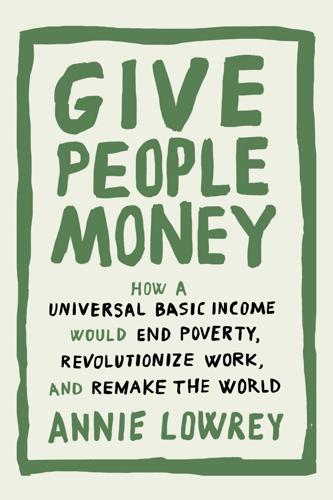
Give People Money
by
Annie Lowrey
Published 10 Jul 2018

The Millionaire Next Door: The Surprising Secrets of America's Wealthy
by
Thomas Stanley
and
William Danko
Published 15 Nov 2010

Financial Independence
by
John J. Vento
Published 31 Mar 2013
Still, a house can increase in value if you hang on to it for many years and maintain it well. It can also help you financially in other ways. Why a Mortgage Is Still Good Debt The reason a home mortgage is usually considered good debt is that from the moment you buy the house, it offers certain financial reliefs and leverage. For starters, your home mortgage interest may be tax deductible. (The federal government allows you to deduct mortgage interest expenses to the extent your mortgage does not exceed $1 million. Therefore, if you are in the 40 percent tax bracket and you are paying 6 percent interest on your mortgage, your after-tax cost for financing may actually be only 3.6 percent, which is 6 percent less the 40 percent tax savings).
…
c04.indd 95 26/02/13 2:42 PM 96 Financial Independence (Getting to Point X ) Conversely, if you have a very strong balance sheet and your assets significantly exceed your liabilities, you may want to consider consolidating your high-interest consumer debt into your mortgage refinancing. Not only will you be able to significantly lower your interest rate, but the interest you pay on this mortgage may also be tax deductible for you. I would only recommend this to individuals who have already accumulated a comfortable financial net worth and believe their probability of defaulting on their loans does not exist. Once again, you cannot move forward effectively and efficiently on the road to financial independence until you clean up the liabilities section of your Statement of Financial position—in other words, your debts.

The Rent Is Too Damn High: What to Do About It, and Why It Matters More Than You Think
by
Matthew Yglesias
Published 6 Mar 2012

A Brief History of Neoliberalism
by
David Harvey
Published 2 Jan 1995
The corporate welfare programmes that now exist in the US at federal, state, and local levels amount to a vast redirection of public moneys for corporate benefit (directly as in the case of subsidies to agribusiness and indirectly as in the case of the military-industrial sector), in much the same way that the mortgage interest rate tax deduction operates in the US as a subsidy to upper-income homeowners and the construction industry. The rise of surveillance and policing and, in the case of the US, incarceration of recalcitrant elements in the population indicates a more sinister turn towards intense social control. The prison-industrial complex is a thriving sector (alongside personal security services) in the US economy.
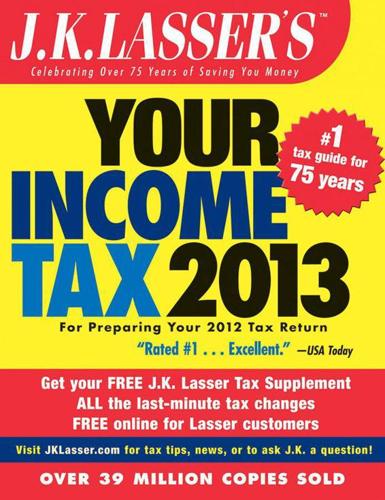
J.K. Lasser's Your Income Tax
by
J K Lasser Institute
Published 30 Oct 2012
The church or local congregation must officially designate the part of the minister’s compensation that is a rental or housing allowance. To qualify for tax-free treatment, the designation must be made in advance of the payments. Official action may be shown by an employment contract, minutes, a resolution, or a budget allowance. - - - - - - - - - - Filing Tip Mortgage Interest and Taxes If you itemize deductions on Schedule A (Form 1040), deduct payments for qualifying home mortgage interest (15.1) and real estate taxes (16.6) on your home even if you use a tax-free housing allowance to finance the payments. - - - - - - - - - - Who qualifies for tax-free allowance? Tax-free treatment is allowed to ordained ministers, rabbis, and cantors who receive housing allowances as part of their compensation for ministerial duties.
…
Some of the expenses will not be currently deductible. The allocable rental expenses are deducted from rental income in a specific order: Step 1. The rental portion of the following expenses is fully deductible on Schedule E of Form 1040, even if the total exceeds rental income: deductible home mortgage interest (15.1), real estate taxes (16.4), deductible casualty and theft losses (Chapter 18), and directly related rental expenses. Directly related rental expenses are rental expenses not related to the use or maintenance of the residence itself, such as office supplies, rental agency fees, advertising, and depreciation on office equipment used in the rental activity.
…
The taxpayer’s brother bought the house but allowed the taxpayer and his wife to live there on the condition that they make the mortgage payments directly to the bank. The IRS disallowed the taxpayer’s deduction for the mortgage interest on the grounds that he was not liable for the mortgage debt; his brother was. However, the Tax Court allowed the deduction, holding that the taxpayer was the equitable owner of the home and that he was legally obligated to his brother to pay off the mortgage. - - - - - - - - - - Loan limit for buying new home may be increased from $1million to $1.1million. The maximum home acquisition debt limit is $1,000,000, or $500,000 if you are married filing separately.

J.K. Lasser's Your Income Tax 2014
by
J. K. Lasser
Published 5 Oct 2013
The church or local congregation must officially designate the part of the minister’s compensation that is a rental or housing allowance. To qualify for tax-free treatment, the designation must be made in advance of the payments. Official action may be shown by an employment contract, minutes, a resolution, or a budget allowance. - - - - - - - - - - Filing Tip Mortgage Interest and Taxes If you itemize deductions on Schedule A (Form 1040), deduct payments for qualifying home mortgage interest (15.1) and real estate taxes (16.6) on your home even if you use a tax-free housing allowance to finance the payments. - - - - - - - - - - Who qualifies for tax-free allowance? Tax-free treatment is allowed to ordained ministers, rabbis, and cantors who receive housing allowances as part of their compensation for ministerial duties.
…
Some of the expenses will not be currently deductible. The allocable rental expenses are deducted from rental income in a specific order: Step 1. The rental portion of the following expenses is fully deductible on Schedule E of Form 1040, even if the total exceeds rental income: deductible home mortgage interest (15.1), real estate taxes (16.4), deductible casualty and theft losses (Chapter 18), and directly related rental expenses. Directly related rental expenses are rental expenses not related to the use or maintenance of the residence itself, such as office supplies, rental agency fees, advertising, and depreciation on office equipment used in the rental activity.
…
The taxpayer’s brother bought the house but allowed the taxpayer and his wife to live there on the condition that they make the mortgage payments directly to the bank. The IRS disallowed the taxpayer’s deduction for the mortgage interest on the grounds that he was not liable for the mortgage debt; his brother was. However, the Tax Court allowed the deduction, holding that the taxpayer was the equitable owner of the home and that he was legally obligated to his brother to pay off the mortgage. - - - - - - - - - - The $1,000,000 (or $500,000) limit applies to acquisition loans taken out after October 13, 1987. If you incurred substantial loans before October 14, 1987, and plan to purchase a new home, your deduction for the mortgage for the new home may be limited.
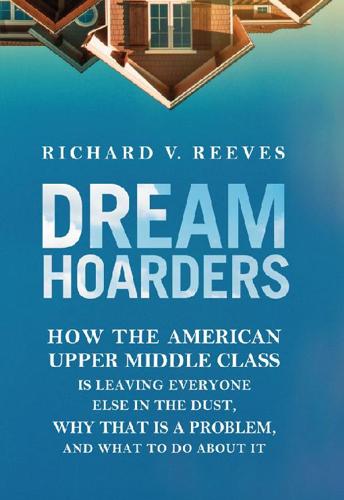
Dream Hoarders: How the American Upper Middle Class Is Leaving Everyone Else in the Dust, Why That Is a Problem, and What to Do About It
by
Richard V. Reeves
Published 22 May 2017
Thus, many people feel that if they want the good life for themselves and their children, they have to buy an expensive house. Houses in the communities containing the best schools are bid up accordingly. Perversely, federal tax policy makes attainment of these sought-after houses easier for those earning more money; they will be in a higher tax bracket and will enjoy larger mortgage interest and property tax deductions, and therefore lower real costs, than their lower-income competitors.17 Just in case you missed that last sentence: we are using the tax system to help richer people buy bigger houses near the best schools. The preferential treatment of mortgage interest is just one example of the “upside down” system of subsidies, which I’ll delve into a bit more in the next chapter.
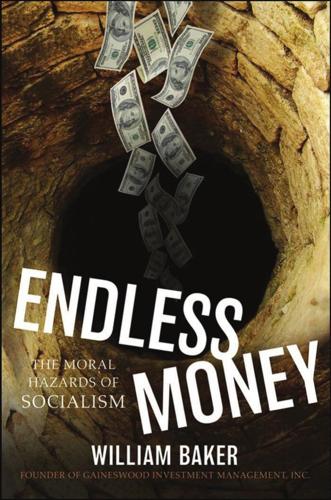
Endless Money: The Moral Hazards of Socialism
by
William Baker
and
Addison Wiggin
Published 2 Nov 2009
Even notable conservatives who shared power with a liberal Congress or executive branch, such as Ronald Reagan or Newt Gingrich, respectively, were unable to restrain the growth of government, much less undo the empowerment extended beyond its original constitutionally enumerated powers. Chapter 9 The Heart of the Financial System ousing is probably the most heavily subsidized industry in the United States. Mortgages are tax deductible, and $5 trillion of them piggyback upon the full faith and credit of the U.S. government, providing an interest rate subsidy to homeowners in addition to the tax savings1. By promoting home ownership so forcefully, might the demand for housing have been overly stimulated to the point that we now face a systemic financial crisis?
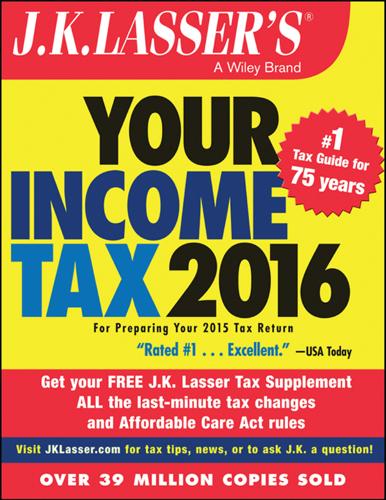
J.K. Lasser's Your Income Tax 2016: For Preparing Your 2015 Tax Return
by
J. K. Lasser Institute
Published 19 Oct 2015
The church or local congregation must officially designate the part of the minister’s compensation that is a rental or housing allowance. To qualify for tax-free treatment, the designation must be made in advance of the payments. Official action may be shown by an employment contract, minutes, a resolution, or a budget allowance. Filing Tip Mortgage Interest and Taxes If you itemize deductions on Schedule A (Form 1040), deduct payments for qualifying home mortgage interest (15.1) and real estate taxes (16.6) on your home even if you use a tax-free housing allowance to finance the payments. Who qualifies for the exclusion?Tax-free treatment is allowed to ordained ministers, rabbis, and cantors who receive in-kind housing or housing allowances as part of their compensation for ministerial duties.
…
Some of the expenses will not be currently deductible. The allocable rental expenses are deducted from rental income in a specific order: Step 1. The rental portion of the following expenses is fully deductible on Schedule E of Form 1040, even if the total exceeds rental income: deductible home mortgage interest (15.1), real estate taxes (16.4), deductible casualty and theft losses (Chapter 18), and directly related rental expenses. Directly related rental expenses are rental expenses not related to the use or maintenance of the residence itself, such as office supplies, rental agency fees, advertising, and depreciation on office equipment used in the rental activity.
…
The taxpayer’s brother bought the house but allowed the taxpayer and his wife to live there on the condition that they make the mortgage payments directly to the bank. The IRS disallowed the taxpayer’s deduction for the mortgage interest on the grounds that he was not liable for the mortgage debt; his brother was. However, the Tax Court allowed the deduction, holding that the taxpayer was the equitable owner of the home and that he was legally obligated to his brother to pay off the mortgage. The Tax Court has taken a similar approach in other cases to allow a mortgage interest deduction to a family member who was not the legal owner of the home.

Tailspin: The People and Forces Behind America's Fifty-Year Fall--And Those Fighting to Reverse It
by
Steven Brill
Published 28 May 2018
The problem is that the government spends approximately 75 percent of its housing assistance dollars on middle-class and wealthy homeowners—by allowing interest on mortgages to be tax-deductible. That sacrosanct tax break costs the government about $70 billion annually. The cost of all housing assistance programs for the poor and lower middle class—who are unlikely to own homes or have mortgages, or even file tax returns that itemize deductions—is approximately $22 billion. The National Low Income Housing Coalition has calculated that limiting the deductions that the wealthy could take on jumbo mortgages, which in 2017 were capped at interest for mortgages of $1 million, to $500,000 would double the amount available for assistance to renters through rental vouchers.
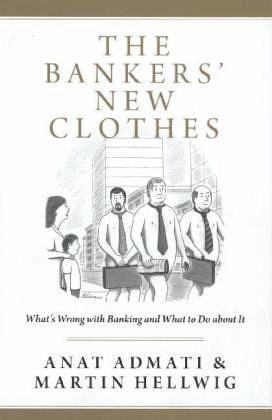
The Bankers' New Clothes: What's Wrong With Banking and What to Do About It
by
Anat Admati
and
Martin Hellwig
Published 15 Feb 2013
To see how this works, let us go back to Kate’s purchase of her house without Aunt Claire’s guarantees. Suppose Kate could pay for the house without borrowing but she considered borrowing anyway. Would it make a difference? In the United States, the answer is generally “Yes,” because the interest paid on mortgages is tax deductible. In determining her taxable income, Kate could deduct the mortgage interest payments as an expense.21 Borrowing could therefore reduce Kate’s taxes, essentially making Uncle Sam contribute to the purchase of her house.22 Corporations can similarly save on taxes by borrowing. In most countries, corporate taxes are paid on a corporation’s “income,” defined in such a way that interest paid on the corporation’s debt is considered a tax-deductible expense.23 The more debt and the less equity a corporation uses in its funding, the less it pays in taxes.

The Aristocracy of Talent: How Meritocracy Made the Modern World
by
Adrian Wooldridge
Published 2 Jun 2021
We also need to look outside the world of educational policy. Housing reforms might produce rich results. Weakening zoning rules that make it difficult to build flats in high-cost cities would make it easier for poorer people to move to areas where jobs and good schools are more abundant. Abolishing mortgage-interest tax deduction, which helps already wealthy people to buy homes, would allow the government to increase the size of its housing programmes for the poor without putting more pressure on the Exchequer.40 With a bit of imagination new technology can also be used to equalize life chances. During the Second World War, Bletchley Park did an impressive job of discovering untapped female talent by recruiting people who could solve crosswords and other puzzles.
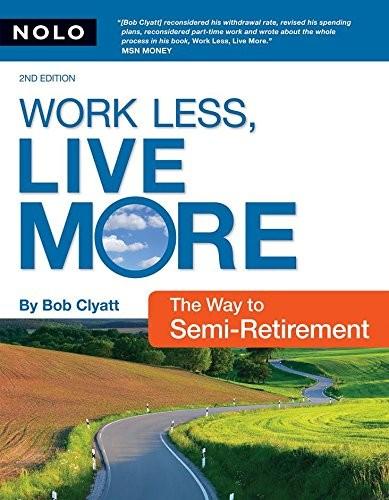
Work Less, Live More: The Way to Semi-Retirement
by
Robert Clyatt
Published 28 Sep 2007
Realizing that $1,000 earned in 242 | Work Less, Live More semi-retirement is probably worth a weightier $950 in the hand means that those planning for semi-retirement are often a lot closer to their financial goals than they imagined. TiP Unlearning old tax-avoidance strategies. Since you’ll be in such a low tax bracket, some common tax-minimizing strategies may no longer help. For instance, it may no longer make sense to have a mortgage for its tax-deductible interest. You might also want to skip municipal bonds and take a higher yielding taxable bond instead. And after-tax contributions of earned income to a Roth IRA may be even more advantageous than pretax contributions to a regular IRA. The reason: You have such low taxable income that additional deductions give little or no added benefit.
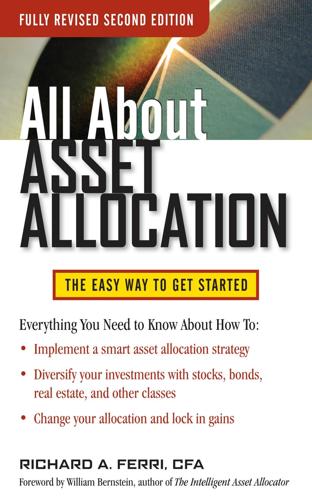
All About Asset Allocation, Second Edition
by
Richard Ferri
Published 11 Jul 2010
In addition to providing living quarters, purchasing a home in a good location has proved to be a reliable longterm investment. Homeowners in the United States have enjoyed annual returns that have averaged slightly higher than the inflation rate over the decades. Despite a recent decline in the housing market, the interest on a mortgage remains a tax deduction, and some or all of the profit from selling your home is tax-free. Figure 9-8 represents the average price of a single-family home since 1987, as published by the S&P Case/Shiller Composite–10 Housing Index. The data are collected from local tax offices and represent the sale price of properties that have closed.
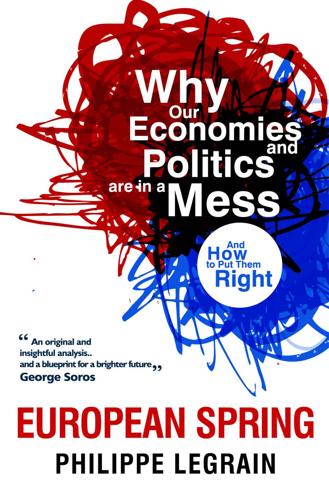
European Spring: Why Our Economies and Politics Are in a Mess - and How to Put Them Right
by
Philippe Legrain
Published 22 Apr 2014
When you own shares, both the income they yield (the dividends) and the capital gains you realise when you sell them are taxed. When you own property that you live in, the “income” you derive from it (the rent that you would otherwise have to pay) is generally not taxed, nor are the capital gains when you sell.549 Moreover, mortgage interest payments are tax-deductible in many European countries.550 While many countries do impose property taxes – for instance, council tax in Britain – these are typically payable by tenants as well as owner-occupiers, so they are not an additional cost of property investment. (They also tend to be based on outdated valuations: from 1991 in Britain, 1970 in France).
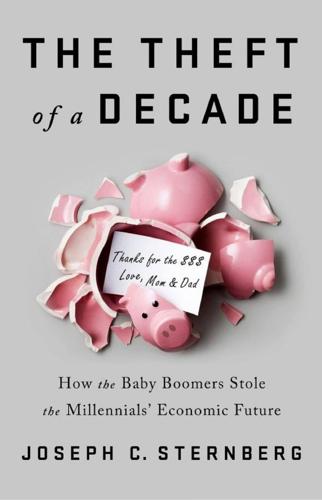
The Theft of a Decade: How the Baby Boomers Stole the Millennials' Economic Future
by
Joseph C. Sternberg
Published 13 May 2019

Financial Market Meltdown: Everything You Need to Know to Understand and Survive the Global Credit Crisis
by
Kevin Mellyn
Published 30 Sep 2009
First, it established a favorable charter for savings banks with their own, somewhat indulgent regulator. It also got the U.S. Post Office out of the savings bank business, making America one of the few countries where postal banks do not provide basic savings and payment services. Second, by making mortgage interest an income tax deduction, they made building up equity in a home one of the few ways ordinary people could accumulate retirement savings. Third, they created a government-run secondary market in mortgages through Federal Home Loan Banks. These were later joined by the GSEs (Fannie Mae and Freddie Mac) we met in Chapter Three.
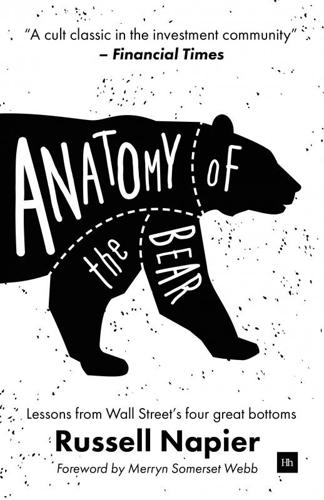
Anatomy of the Bear: Lessons From Wall Street's Four Great Bottoms
by
Russell Napier
Published 18 Jan 2016
The range of lag in earnings had been four-to-seven months, the average lag almost six months. Bonds and the bear The little stone house, once a gardener’s cottage, in Penn Park cost $78,000. Janice wanted to put down $25,000, but Harry pointed out to her that in inflationary times debt is a good thing to have, that mortgage interest is tax-deductible, and that six month $10,000-minimum money market certificates are paying close to 12% these days. John Updike, Rabbit is Rich FIGURE 113. US GOVT BOND YIELD (LONG-TERM), YIELD ON MOODY’S BAA Source: Federal Reserve The bear market in bonds, in its fifth decade, ended in October 1981.
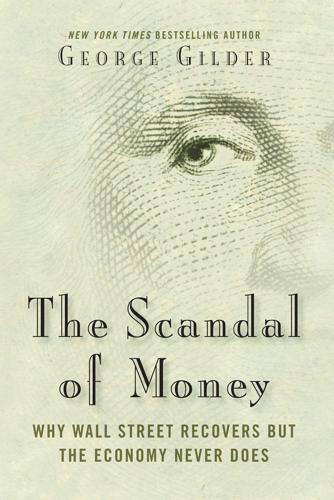
The Scandal of Money
by
George Gilder
Published 23 Feb 2016

The Default Line: The Inside Story of People, Banks and Entire Nations on the Edge
by
Faisal Islam
Published 28 Aug 2013
Estate agents explained that few locals could obtain a mortgage to buy a £120,000 house. BTL mortgages, however, were priced on the basis of likely rent received. As interest rates were at rock-bottom, these typically interest-only mortgages were dirt-cheap, and a killing was there to be made for anyone with the 25 per cent deposit required. Even better, the mortgage was entirely tax deductible. Brutally put, local Mancunians on a typical salary would have zero chance to out-compete the landlords. At the show, some landlords admitted that they were in a ‘battle’ for property with first-time buyers. ‘Yes we take the same property,’ said one landlord with ten flats. ‘I feel a bit guilty, but they should work harder.’
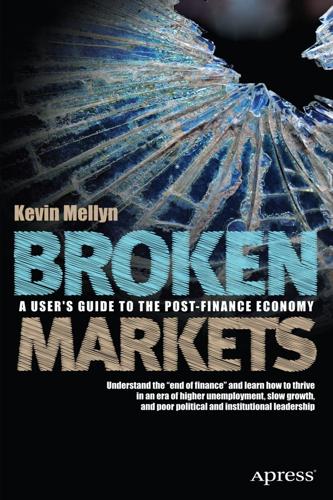
Broken Markets: A User's Guide to the Post-Finance Economy
by
Kevin Mellyn
Published 18 Jun 2012

Smart Money: How High-Stakes Financial Innovation Is Reshaping Our WorldÑFor the Better
by
Andrew Palmer
Published 13 Apr 2015
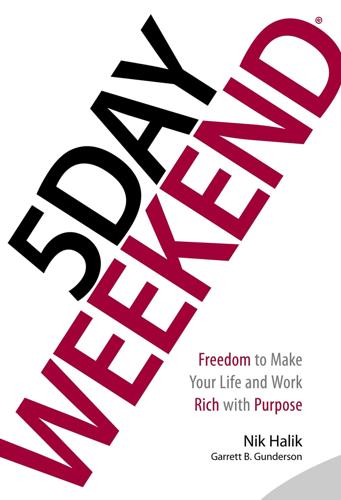
5 Day Weekend: Freedom to Make Your Life and Work Rich With Purpose
by
Nik Halik
and
Garrett B. Gunderson
Published 5 Mar 2018
Restructure Your Loans You can restructure your loans by rolling short-term, high-interest loans into long-term, low-interest, tax-deductible loans. The goal here is to minimize your payments and maximize your cash flow. For example, if you have enough home equity, you can refinance your mortgage, which can be a tax-deductible loan, and roll as many of your non-deductible loans (credit cards, auto, etc.) into it as possible. This will typically lower your minimum monthly loan payments, and the tax deduction will also increase your cash flow. Then you can attack your remaining loans strategically, using your increased cash flow to eliminate one loan at a time. 3.

Inner Entrepreneur: A Proven Path to Profit and Peace
by
Grant Sabatier
Published 10 Mar 2025

A Random Walk Down Wall Street: The Time-Tested Strategy for Successful Investing
by
Burton G. Malkiel
Published 10 Jan 2011
You have to live somewhere, and buying has several tax advantages over renting. Because Congress wanted to encourage home ownership and the values associated with it, it gave the homeowner two important tax breaks: (1) Although rent is not deductible from income taxes, the two major expenses associated with home ownership—interest payments on your mortgage and property taxes—are deductible; (2) realized gains in the value of your house up to substantial amounts are tax-exempt. In addition, ownership of a house is a good way to force yourself to save, and a house provides enormous emotional satisfaction. My advice is: Own your own home if you can possibly afford it.

Just Giving: Why Philanthropy Is Failing Democracy and How It Can Do Better
by
Rob Reich
Published 20 Nov 2018
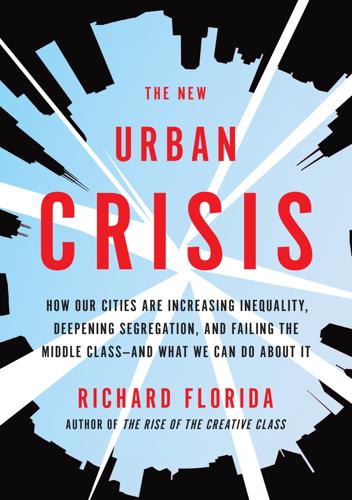
The New Urban Crisis: How Our Cities Are Increasing Inequality, Deepening Segregation, and Failing the Middle Class?and What We Can Do About It
by
Richard Florida
Published 9 May 2016

The Age of Stagnation: Why Perpetual Growth Is Unattainable and the Global Economy Is in Peril
by
Satyajit Das
Published 9 Feb 2016
Originally, owning land or homes, the preserve of the wealthy, conferred the right to vote. Despite this no longer being the case, governments subsidize home ownership, believing that it creates a more stable society and greater political engagement. Most countries provide incentives for financial institutions to lend for housing. Mortgage-interest payments are sometimes tax-deductible. Capital gains from the sale of a residence attract no or low rates of tax. Concessions on property taxes, property transfer duties, or direct grants to assist in the purchase of homes are common. Encouraged by government assistance and subsidies, there is overinvestment in housing.

Heartland: A Memoir of Working Hard and Being Broke in the Richest Country on Earth
by
Sarah Smarsh
Published 17 Sep 2018

The Great Divide: Unequal Societies and What We Can Do About Them
by
Joseph E. Stiglitz
Published 15 Mar 2015
The original Paulson plan is like a massive blood transfusion to a patient with severe internal hemorrhaging. We won’t save the patient if we don’t do something about the foreclosures. Even after congressional revisions, too little is being done. We need to help people stay in their homes, by converting the mortgage-interest and property-tax deductions into cashable tax credits; by reforming bankruptcy laws to allow expedited restructuring, which would bring down the value of the mortgage when the price of the house is below that of the mortgage; and even government lending, taking advantage of the government’s lower cost of funds and passing the savings on to poor and middle-income homeowners. 3.
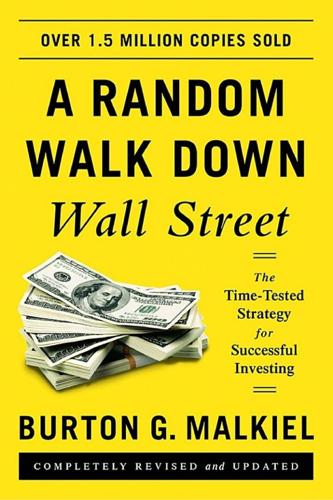
A Random Walk Down Wall Street: The Time-Tested Strategy for Successful Investing (Eleventh Edition)
by
Burton G. Malkiel
Published 5 Jan 2015
You have to live somewhere, and buying has several tax advantages over renting. Because Congress wanted to encourage home ownership and the values associated with it, it gave the homeowner two important tax breaks: (1) Although rent is not deductible from income taxes, the two major expenses associated with home ownership—interest payments on your mortgage and property taxes—are deductible; (2) realized gains in the value of your house up to substantial amounts are tax-exempt. In addition, ownership of a house is a good way to force yourself to save, and a house provides enormous emotional satisfaction. My advice is: Own your own home if you can possibly afford it.

Borrow: The American Way of Debt
by
Louis Hyman
Published 24 Jan 2012

Three Felonies a Day: How the Feds Target the Innocent
by
Harvey Silverglate
Published 6 Jun 2011
The whole notion that the IRS somehow knows how much “real gain” (in contrast to tax savings) has to be produced before a shelter is deemed legitimate is, according to these experts, “the moral equivalent of that much-loved definition of pornography” articulated by the late Supreme Court Justice Potter Stewart: “I know it when I see it.”13 When it comes to a legitimate versus a bogus tax shelter, the Stanford experts tell us, “the IRS knows it when it sees it.”14 Senator Carl Levin of Michigan, however, who was present at the subcommittee hearing attended by the three KPMG partners, took a different view of the matter. He told the Senate in the summer of 2005 that there was a fairly clear line between “abusive tax shelters” and the “legitimate” variety. “Interest paid on a home mortgage or Congressionally approved tax deductions for building affordable housing,” said the Senator, were examples of the legitimate variety. The “abusive” shelters, said Senator Levin, “are complicated transactions promoted to provide large tax benefits unintended by the tax code.”15 The litmus test offered by Senator Levin clarified nothing.

Carjacked: The Culture of the Automobile and Its Effect on Our Lives
by
Catherine Lutz
and
Anne Lutz Fernandez
Published 5 Jan 2010
Save to buy or finance carefully. Ideally, you would save up before buying a car and pay cash. You would then shoulder only the actual price of the vehicle, not hefty additional financing costs. As we have seen, under the worst circumstances, a $17,000 car can end up costing $34,000. And of course, unlike home mortgages, car loans are not tax-deductible. The reality is that, unfortunately, paying cash is not always possible. If you must borrow, read the cautionary tales and advice on the web site StopAutoFraud.com. It is also usually best to make a purchase with a sane car loan rather than leasing a vehicle, because although leasing can make for CONCLUSION 215 lower monthly payments, doing so can lead you to lease a more expensive car rather than pocket the monthly differential.
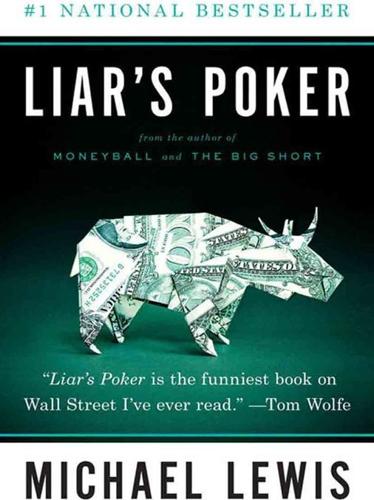
Liar's Poker
by
Michael Lewis
Published 1 Jan 1989

The Corruption of Capitalism: Why Rentiers Thrive and Work Does Not Pay
by
Guy Standing
Published 13 Jul 2016
The scale of tax subsidies is awesome. According to IMF calculations, the USA spends over 7 per cent of GDP on tax breaks, Australia and Italy 8 per cent or more and the UK 6 per cent.9 Just seven of the personal tax breaks in the USA – for health insurance, mortgage interest, pension plans, earned income tax credit for low-paid workers, deductions for state and local taxes, charitable donations and untaxed social security benefits – will cost $3 trillion in lost revenue between 2014 and 2018. Over half of US tax breaks go to the richest fifth of households, according to the Congressional Budget Office.
…
Dating from 1853, when the UK first made interest paid by firms on loans or debts tax-deductible, today it is a feature of tax systems everywhere. In 2007, before the crash, the annual value of lost revenue due to tax breaks on debt payments was 2.4 per cent of GDP in the Eurozone (1.9 per cent for company debt; 0.5 for mortgage debt) and 3.5 per cent in the UK (all attributable to company debt, as mortgage interest payments are not tax-deductible). To put it into context, this was more than those countries spent on defence. In the USA, the lost revenue was a staggering 4.9 per cent of GDP, with company debt accounting for most of it. Tax relief on debt servicing by financial firms accounted for three-quarters of all the tax foregone in Britain and the USA; in the Eurozone it was over half.
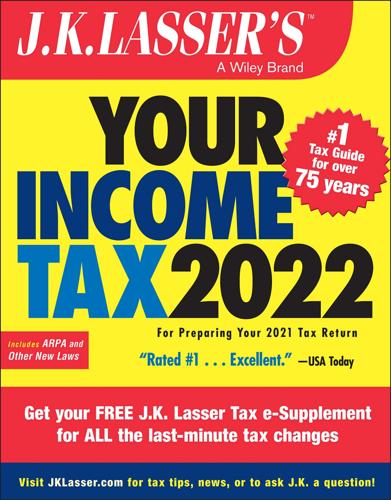
J.K. Lasser's Your Income Tax 2022: For Preparing Your 2021 Tax Return
by
J. K. Lasser Institute
Published 21 Dec 2021
She does not have to pay any tax on the housing since her rental payments are at least 5% of the appraised housing value (5% of $200,000, or $10,000). If her rent was $9,000, she would have to report income of $1,000 ($10,000 minimum required rent – $9,000). Filing Tip Mortgage Interest and Taxes If you itemize deductions on Schedule A (Form 1040 or 1040-SR), deduct payments for qualifying home mortgage interest (15.1) and real estate taxes (16.6) on your home even if you use a tax-free housing allowance to finance the payments. 3.14 Minister's Housing or Housing Allowance By statute, a duly ordained minister pays no tax on the rental value of a home provided as part of his or her pay.
…
Some of the expenses will not be currently deductible. The allocable rental expenses are deducted from rental income in a specific order: The rental portion of the following expenses is fully deductible on Schedule E of Form 1040 or 1040-SR, even if the total exceeds rental income: deductible home mortgage interest (15.1), real estate taxes (16.4), deductible casualty and theft losses (Chapter 18), and directly related rental expenses. Directly related rental expenses are rental expenses not related to the use or maintenance of the residence itself, such as office supplies, rental agency fees, advertising, and depreciation on office equipment used in the rental activity.
…
The taxpayer's brother bought the house but allowed the taxpayer and his wife to live there on the condition that they make the mortgage payments directly to the bank. The IRS disallowed the taxpayer's deduction for the mortgage interest on the grounds that he was not liable for the mortgage debt; his brother was. However, the Tax Court allowed the deduction, holding that the taxpayer was the beneficial (equitable) owner of the home and that he was legally obligated to his brother to pay off the mortgage. As discussed in 15.2, the Tax Court has taken a similar approach in other cases to allow a mortgage interest deduction to a family member who could show that he or she was the beneficial owner of the home.

The Rise and Fall of American Growth: The U.S. Standard of Living Since the Civil War (The Princeton Economic History of the Western World)
by
Robert J. Gordon
Published 12 Jan 2016
F., 167 McKinlay, John and Sonja, 213, 215 McNamara, Frank, 450 meat: consumption of, 66, 82, 333–34, 339; production of, 220–22; rationing of, 335 mechanical reaper, 263–64 Mecherle, George, 309 medical care: hospitals for, 226–31; paying for, 234–37; predicting future of, 594; See also health and health care medical professions, 207, 232–33, 244; in 1870, 50–51; after 1940, 476–77; doctors, 224–28; nurses, 230 medical research, 232–33, 480 medical schools, 226–27, 232–33; cost of medical care and, 234 medical technology, 478–82, 594 Medicare and Medicaid, 489–90, 518, 642 medium-sized cities, housing in, 110–12 Meeker, Edward, 215 Memphis (Tennessee), 217 men: elderly, in labor force, 252–53; erectile dysfunction in, 486; housework done by, 277; in labor force, 34, 248, 250; ratio of women to, 630–31; as stay-at-home husbands, 508; tastes in clothing for, 350; teenagers (1870), 58; in working class (1870), 56 mental health, 473 Mercedes (automobiles), 157 Meucci, Antonio, 574 Micro Instrumentation and Telemetry Systems (MITS), 452 Microsoft, 452, 453, 574 microwave ovens, 358, 362 middle class, 498; in 1870, 46–47; in 1950s and 1960s, 503; bungalow movement housing for, 108–10; housing for (late nineteenth century), 107; market-purchased clothing for, 85–86; small-town housing for, 111 Midwestern cities, housing in, 105–7 midwives, 231, 274 migrations: in 1870, 35–36; of blacks, 368; housing for, 100; westward, 54 milk, 81–82, 220, 245 Miller, Grant, 207, 217–18, 244 minimum wage, 616, 644, 645 mining industry, 266–67 Minneapolis (Minnesota), 151 Miron, Jeffrey, 646 Mitchell, Margaret, 202 mobile (cell) phones, 411, 430–32, 577–78; smartphones, 437–38, 581 Model A (Ford automobile), 155–56, 559 Model T (Ford automobile), 153–56, 165, 169, 382, 559 Mokyr, Joel, 31; on access to running water, 216; on forecasting innovation, 590; on germ theory of disease, 219; on household production, 208, 278 Montgomery Ward catalog, 63, 90–91, 294, 332 Moore, Gordon, 444, 458 Moore’s Law, 444–47, 458, 524, 588–89, 593, 636 Morrill Acts (1862; 1890), 311–12 Morse, Samuel F. B., 178, 568 mortality rates: water quality and, 213–18; See also deaths; life expectancy mortgage financing, 288, 300–303; as tax deduction, 367 Mosaic (web browser), 454 Moses, Robert, 166 motels, 166–67, 392 motion pictures. See movies Motorola 8000 (mobile phone), 431 motor vehicles: registrations of, 161–62, 376–77; See also automobiles movies, 7, 173, 198–205, 322; invention of, 197–98; television’s competition with, 410, 420–21; during World War II, 414–15 MP3 (file format), 435 Mumford, Lewis, 104 Muncie (Indiana): automobile ownership in, 165; diet in, 68; gardens in, 46; heating systems in, 126; home ownership in, 301, 303; housing in, 110–13; migration to, 101; running water in, 124; telephones in, 182; work hours in, 260 municipal water systems, 217 municipal waterworks, 123, 124 Munos, Bernard, 479 Murphy, Kevin, 243 Murray, Charles, 631, 632 Murrow, Edward R., 196, 414 music, 411; digital media for, 435–38; on phonograph records, 186–90, 204, 411; post-World War II, 427–29, 439; on radio, 192, 195, 196, 421 Myspace (social network), 456 Nader, Ralph, 400 nails, 110 narcotic drugs, 222–23 National Broadcasting Company (NBC), 194, 413 National Bureau of Casualty and Surety Underwriters, 309 National Bureau of Standards, 562 National Cancer Act (1971), 470 National Industrial Recovery Act (1933–1935), 542 National Labor Relations Act (Wagner Act; 1935), 543 natural gas, 634 NBC Symphony, 196 Nelson, Richard, 573 Netflix, 436–37 net investment, 586–87 networks: for cell phones, 430–31; Internet as, 442–43, 453–57; for medical care, 494–95; radio, 194; social, 456–57; television, 416–17, 425–26 Newcomen,, Thomas, 568 New Deal, 15, 18; legislation and programs of, 315–17; Social Security during, 516; wages increased during, 541–43, 548 new molecular entities (NMEs), 479 New Orleans, Battle of, 4 news, 433–35; Internet for, 443; movie newsreels, 200; post-World War II broadcasting of, 411; radio broadcasting of, 196; World War II broadcasts of, 413–14 newspapers, 172, 174–77; in 1870, 49; decline of, 433–35 Newsweek (magazine), 434 New York (New York): air travel between Chicago and, 396–97; air travel between Los Angeles and, 398; bacteriological laboratory in, 218; buses in, 160; early television in, 415–16; elevated trains in, 147; General Slocum disaster in, 239; housing in, 102–3; Ladies’ Protective Health Association in, 221; long-distance telephone service for, 183, 185; omnibus service in, 143–44; rail transport between Chicago and, 133, 135, 136, 140; subways in, 130, 148; tenements in, 97; Triangle Shirtwaist Factory fire in, 272; World’s Fair (1939–1940) in, 356, 363, 413, 592 New York Stock Exchange, 582 nickelodeons, 198–99, 205 Nixon, Richard, 357, 419 nonwhites: life expectancy of, 212; See also blacks Nordhaus, William: on global warming, 634; on Moore’s Law, 446; on price of light, 119; on value of health and life expectancy, 242–44, 323 nursing schools, 230 nutrition.

How to Kill a City: The Real Story of Gentrification
by
Peter Moskowitz
Published 7 Mar 2017
In the 1950s, one-third of all private housing was financed with FHA and VA loans. While not all suburban homes were financed through those agencies, the magnitude of the subsidy depressed the market for low- and moderate-income housing, with the result that nearly all new investment in housing went to single-family homes. Home mortgages are still subsidized today via tax deductions that rise with the expense of a new home. These tax breaks end up costing the federal government four to five times what it spends on public housing each year. The highway system functioned similarly, providing people with an illusion that it was cheap to move out to the suburbs.

Elsewhere, U.S.A: How We Got From the Company Man, Family Dinners, and the Affluent Society to the Home Office, BlackBerry Moms,and Economic Anxiety
by
Dalton Conley
Published 27 Dec 2008
Even the bacchanal thrown by Wired magazine—replete with custom martinis and corporate goodie bags—is really an investment in customer relations. Consumption is redefined as investment, as all these expenses are seen as the cost of doing business. And as long as business or the real estate market is chugging briskly along, they do perhaps pay for themselves— even if they require a second mortgage to finance. In short, everything is tax-deductible, even if the IRS would not agree. This is the new form of spending, what I’ll call convestment—the sometimes rocky marriage of consumption and investment. We can also see this new form of spending, for instance, in the rise of gambling as a recreational activity. Today betting losses represent one-quarter of personal consumer expenditures, up from 5 percent in 1970.3 Who would have thought that trying to make money—against the odds stacked in the house’s favor, no less—was a relaxing way to spend our time away from the rat race?

The Triumph of Injustice: How the Rich Dodge Taxes and How to Make Them Pay
by
Emmanuel Saez
and
Gabriel Zucman
Published 14 Oct 2019
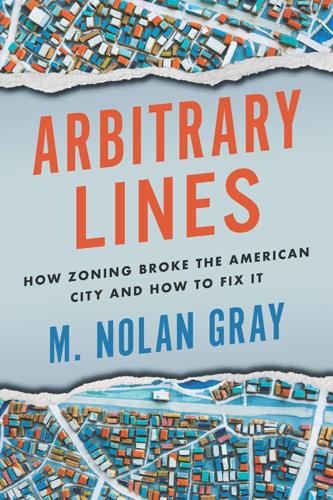
Arbitrary Lines: How Zoning Broke the American City and How to Fix It
by
M. Nolan Gray
Published 20 Jun 2022

To Serve God and Wal-Mart: The Making of Christian Free Enterprise
by
Bethany Moreton
Published 15 May 2009
Casualization, “flexÂ�iÂ� bilÂ�ity,” part-Â�time or temp work, and the erosion of beneÂ�fits, seniority, and tenure—the conditions that had once best described most Â�women’s work in an industrial economy became generalized to the work force as€a whole. Unwaged household labor, personal relationships, and part-Â� time jobs had supported the American breadwinner all along. This breadwinner was a husband whose wife packed his lunch box, a father whose children were trained by the state, an imaginary homesteader whose mortgage was subsidized with tax deductions, a craft worker—Â� union carpenter or university professor—whose job was explicitly Â�reserved for him by race and sex. Without the exclusions that had invisibly supported him, he disappeared from the economic landscape with frightening suddenness. By adapting the management/labor dyad to a “natural” family hierarchy, Wal-Â�Mart performed another of the Sun Belt’s innovative sleights of hand.

The Color of Money: Black Banks and the Racial Wealth Gap
by
Mehrsa Baradaran
Published 14 Sep 2017
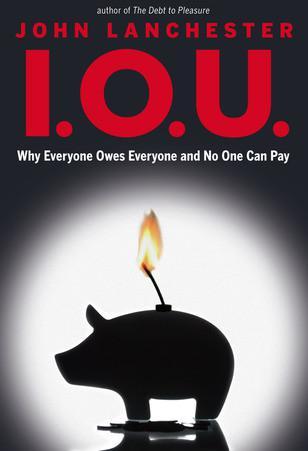
I.O.U.: Why Everyone Owes Everyone and No One Can Pay
by
John Lanchester
Published 14 Dec 2009

Personal Investing: The Missing Manual
by
Bonnie Biafore
,
Amy E. Buttell
and
Carol Fabbri
Published 24 May 2010

Who Needs the Fed?: What Taylor Swift, Uber, and Robots Tell Us About Money, Credit, and Why We Should Abolish America's Central Bank
by
John Tamny
Published 30 Apr 2016

The Ascent of Money: A Financial History of the World
by
Niall Ferguson
Published 13 Nov 2007
The only real difference between Right and Left was the readiness of the Conservatives to deregulate the private rental market, in the hope of encouraging private landlords, and the equal and opposite resolve of Labour to reimpose rent controls and stamp out ‘Rachmanism’ (exploitative behaviour by landlords), exemplified by Peter Rachman, who used intimidation to evict the sitting tenants of rent-controlled properties, replacing them with West Indian immigrants who had to pay market rents.31 As late as 1971, fewer than half of British homes were owner-occupied. In the United States, where public housing was never so important, mortgage interest payments were always tax deductible, from the inception of the federal income tax in 1913.32 As Ronald Reagan said when the rationality of this tax break was challenged, mortgage interest relief was ‘part of the American dream’.ao It played a much smaller role in Britain until 1983, when a more radically Conservative government led by Margaret Thatcher introduced Mortgage Interest Relief At Source (MIRAS) for the first £30,000 of a qualifying mortgage.
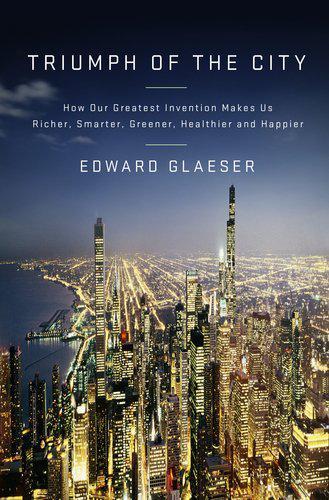
Triumph of the City: How Our Greatest Invention Makes Us Richer, Smarter, Greener, Healthier, and Happier
by
Edward L. Glaeser
Published 1 Jan 2011

Your Money: The Missing Manual
by
J.D. Roth
Published 18 Mar 2010

WTF?: What's the Future and Why It's Up to Us
by
Tim O'Reilly
Published 9 Oct 2017
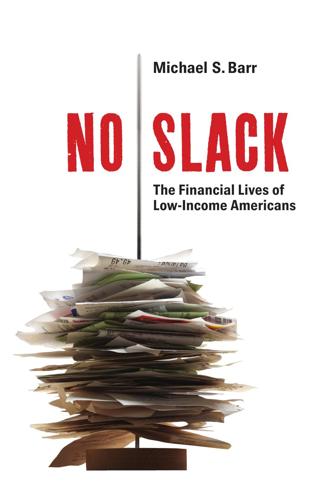
No Slack: The Financial Lives of Low-Income Americans
by
Michael S. Barr
Published 20 Mar 2012
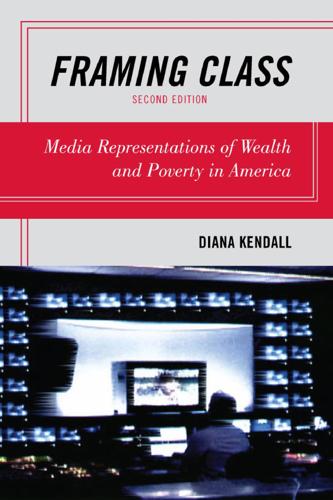
Framing Class: Media Representations of Wealth and Poverty in America
by
Diana Elizabeth Kendall
Published 27 Jul 2005
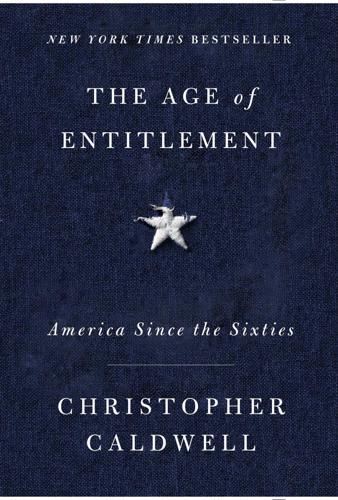
The Age of Entitlement: America Since the Sixties
by
Christopher Caldwell
Published 21 Jan 2020
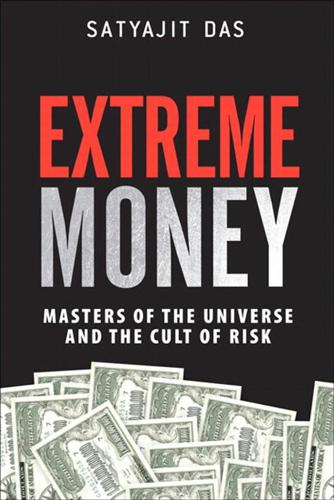
Extreme Money: Masters of the Universe and the Cult of Risk
by
Satyajit Das
Published 14 Oct 2011

Straphanger
by
Taras Grescoe
Published 8 Sep 2011
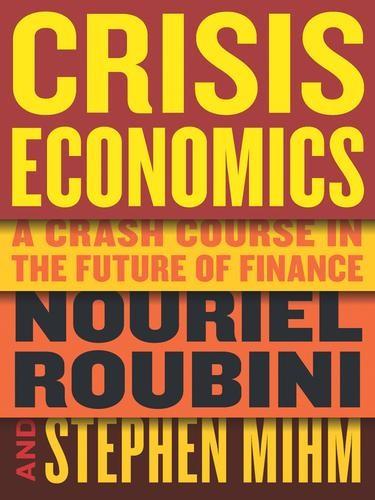
Crisis Economics: A Crash Course in the Future of Finance
by
Nouriel Roubini
and
Stephen Mihm
Published 10 May 2010

EuroTragedy: A Drama in Nine Acts
by
Ashoka Mody
Published 7 May 2018
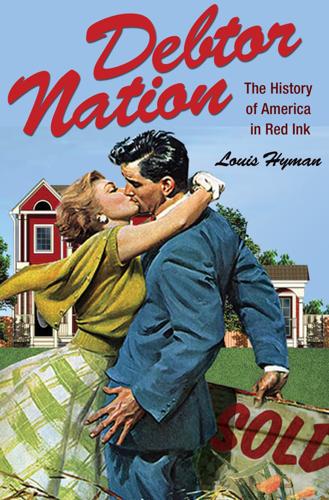
Debtor Nation: The History of America in Red Ink (Politics and Society in Modern America)
by
Louis Hyman
Published 3 Jan 2011

Be Your Own Financial Adviser: The Comprehensive Guide to Wealth and Financial Planning
by
Jonquil Lowe
Published 14 Jul 2010
Attendance allowance. Disability living allowance. Contributory employment and support allowance. Other sources Student grants and loans. Maintenance from a former partner. Gambling winnings. Rent from lodgers up to £4,250 a year through the Rent-a-Room Relief scheme. Cashback on a mortgage. Taxable income usually paid without any tax deducted Profits from renting out property. Benefit you are deemed to get if you still use something you have given away (see Chapter 11). Step 1: Add up your income The first step in working out your tax bill is to decide what income to include in your tax calculation. Do not include any tax-free income.
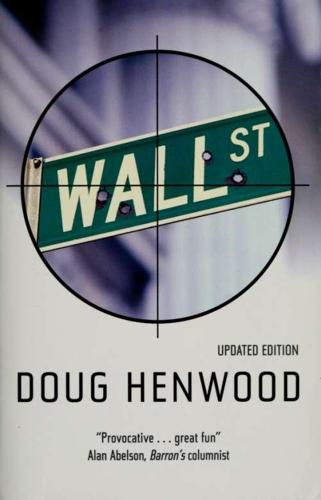
Wall Street: How It Works And for Whom
by
Doug Henwood
Published 30 Aug 1998
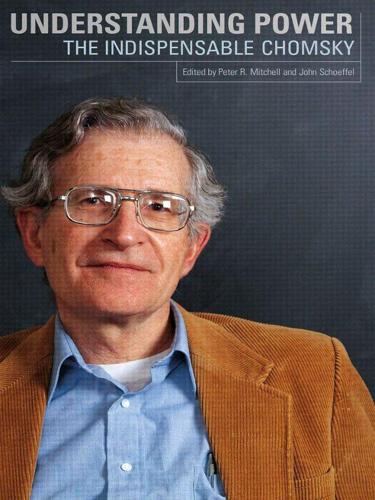
Understanding Power
by
Noam Chomsky
Published 26 Jul 2010

Capital in the Twenty-First Century
by
Thomas Piketty
Published 10 Mar 2014